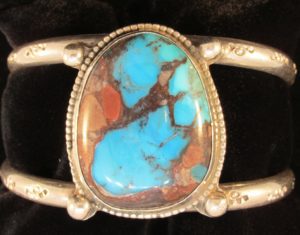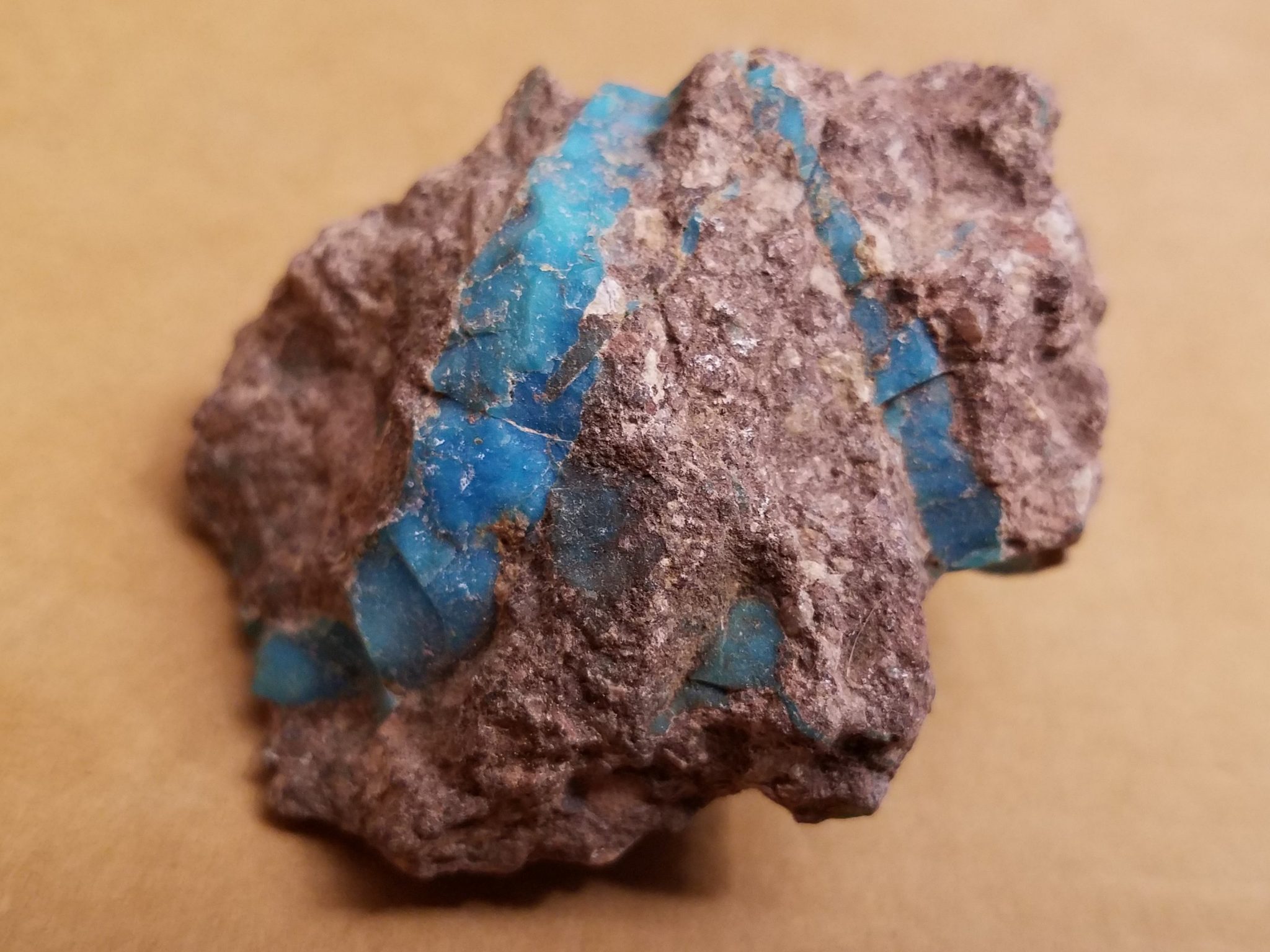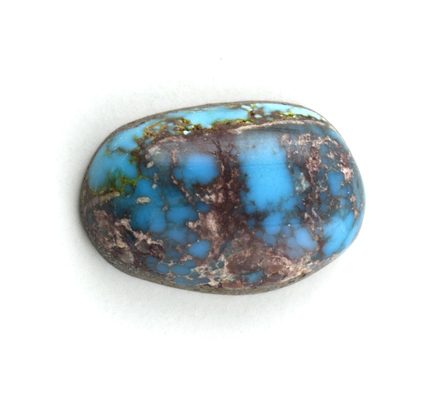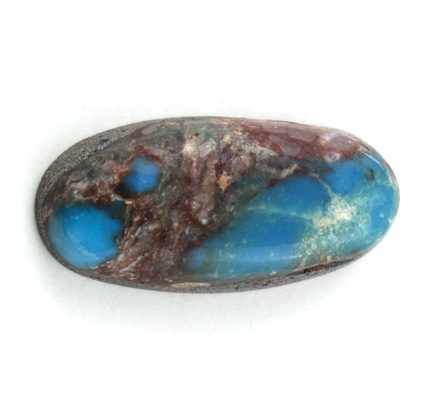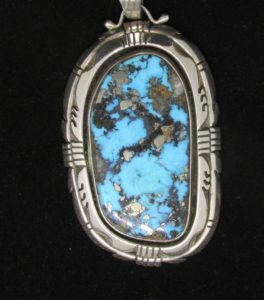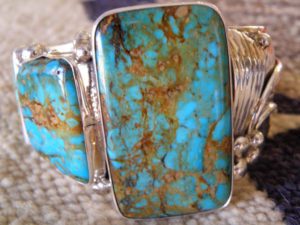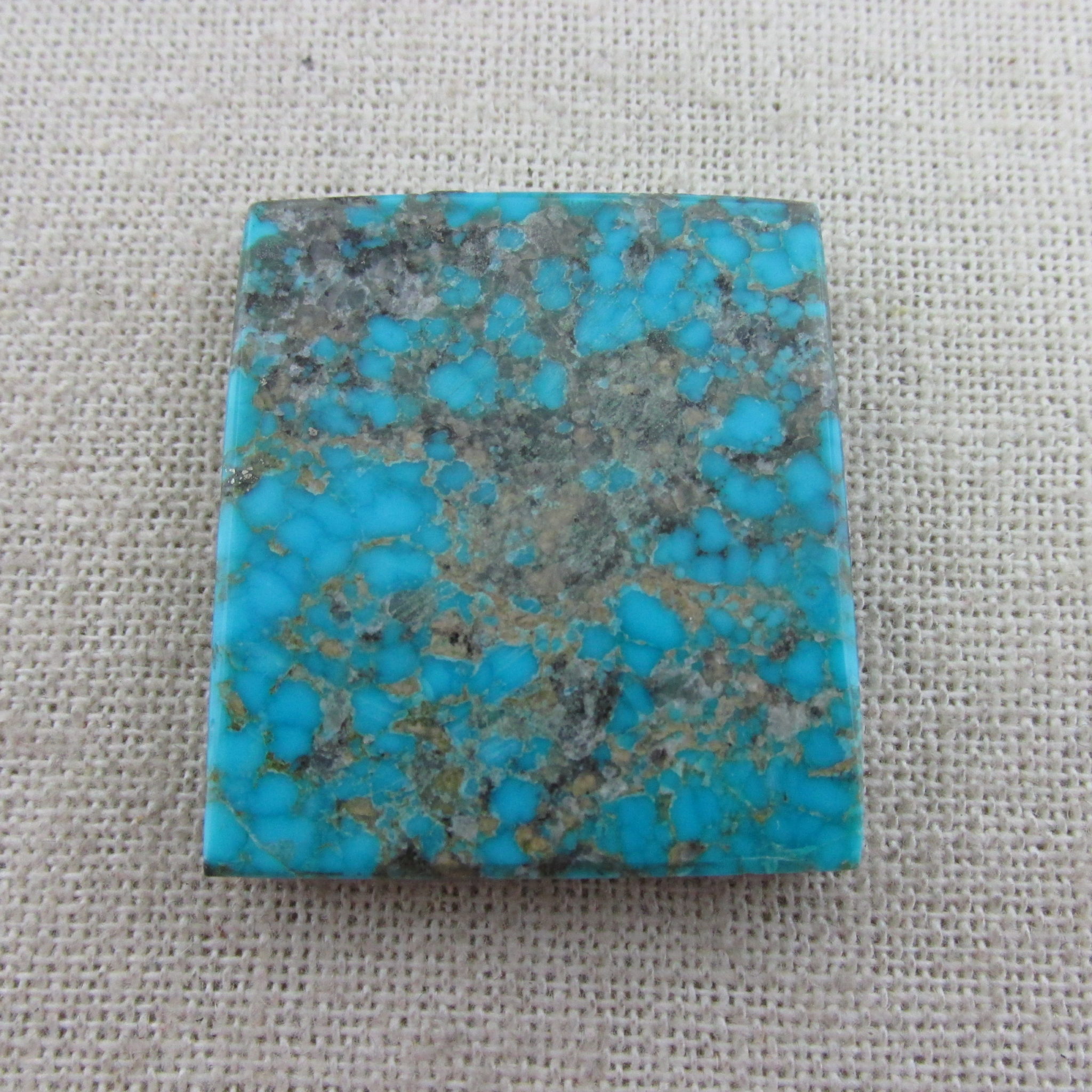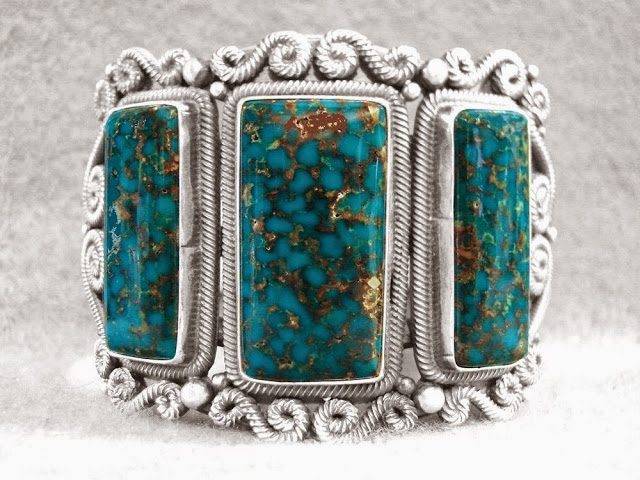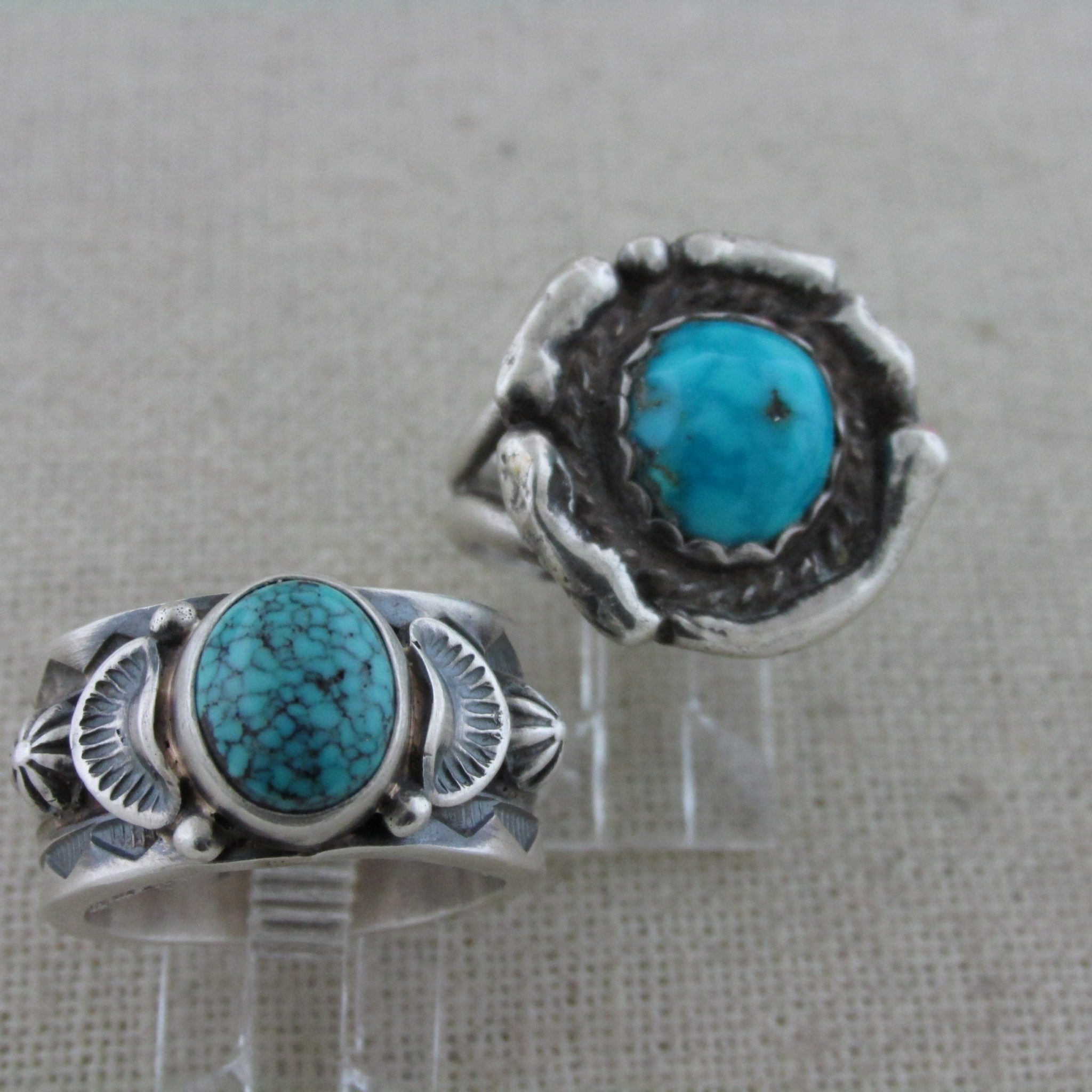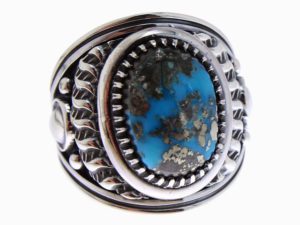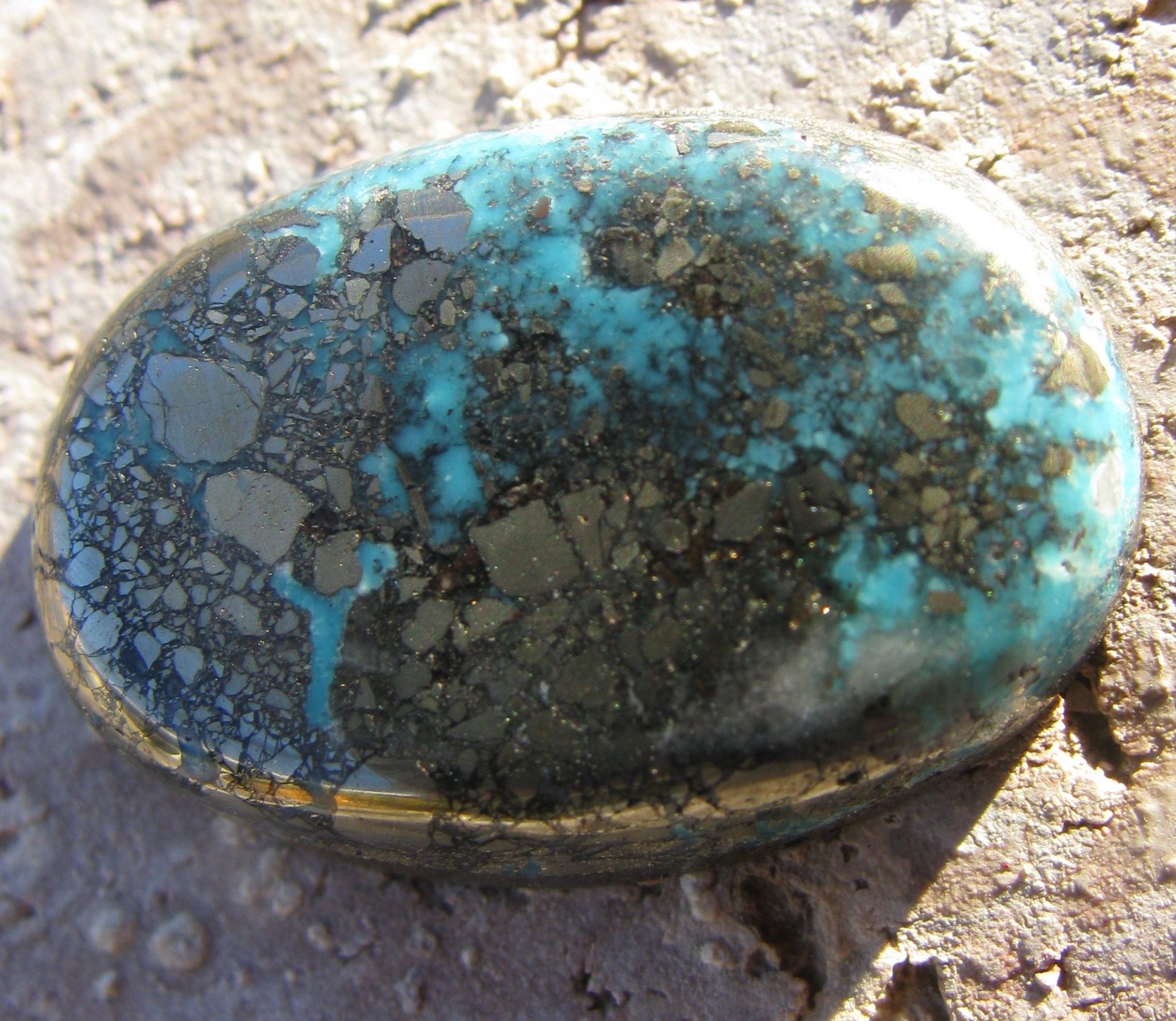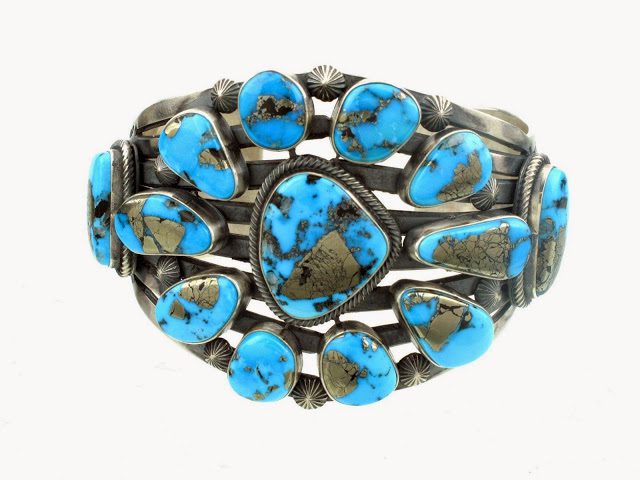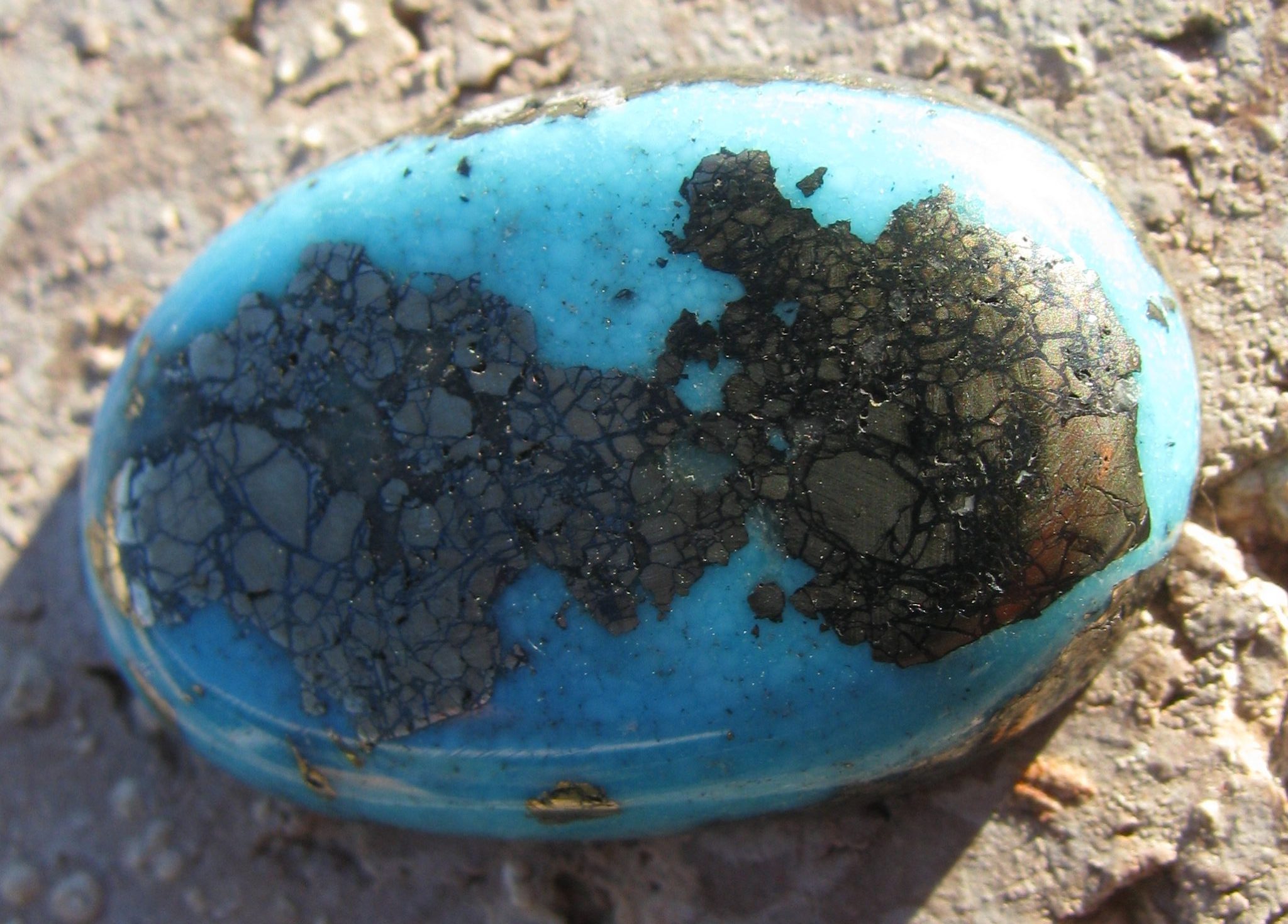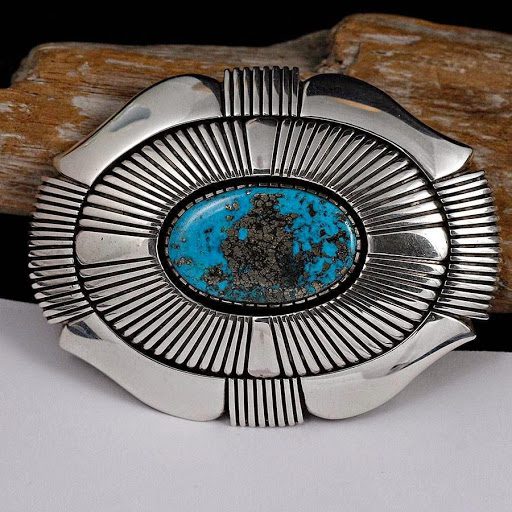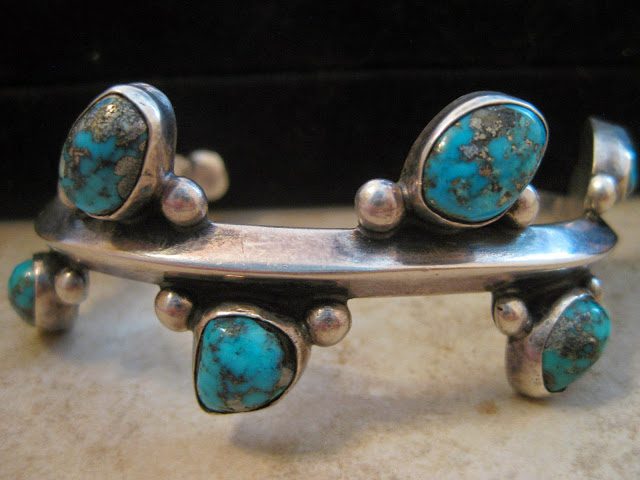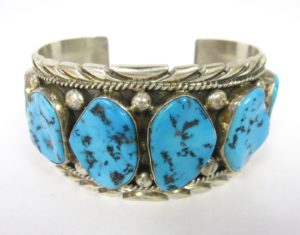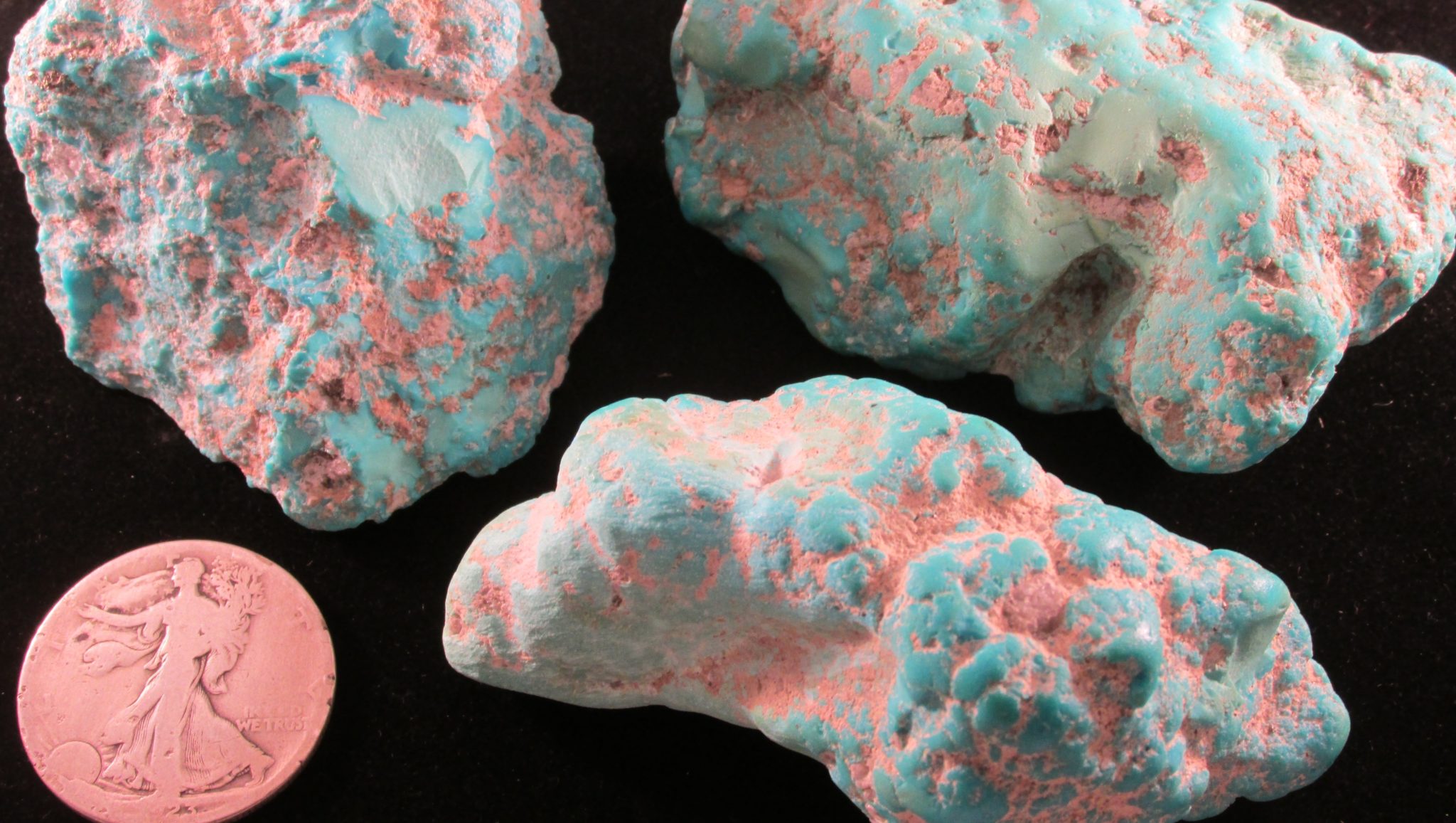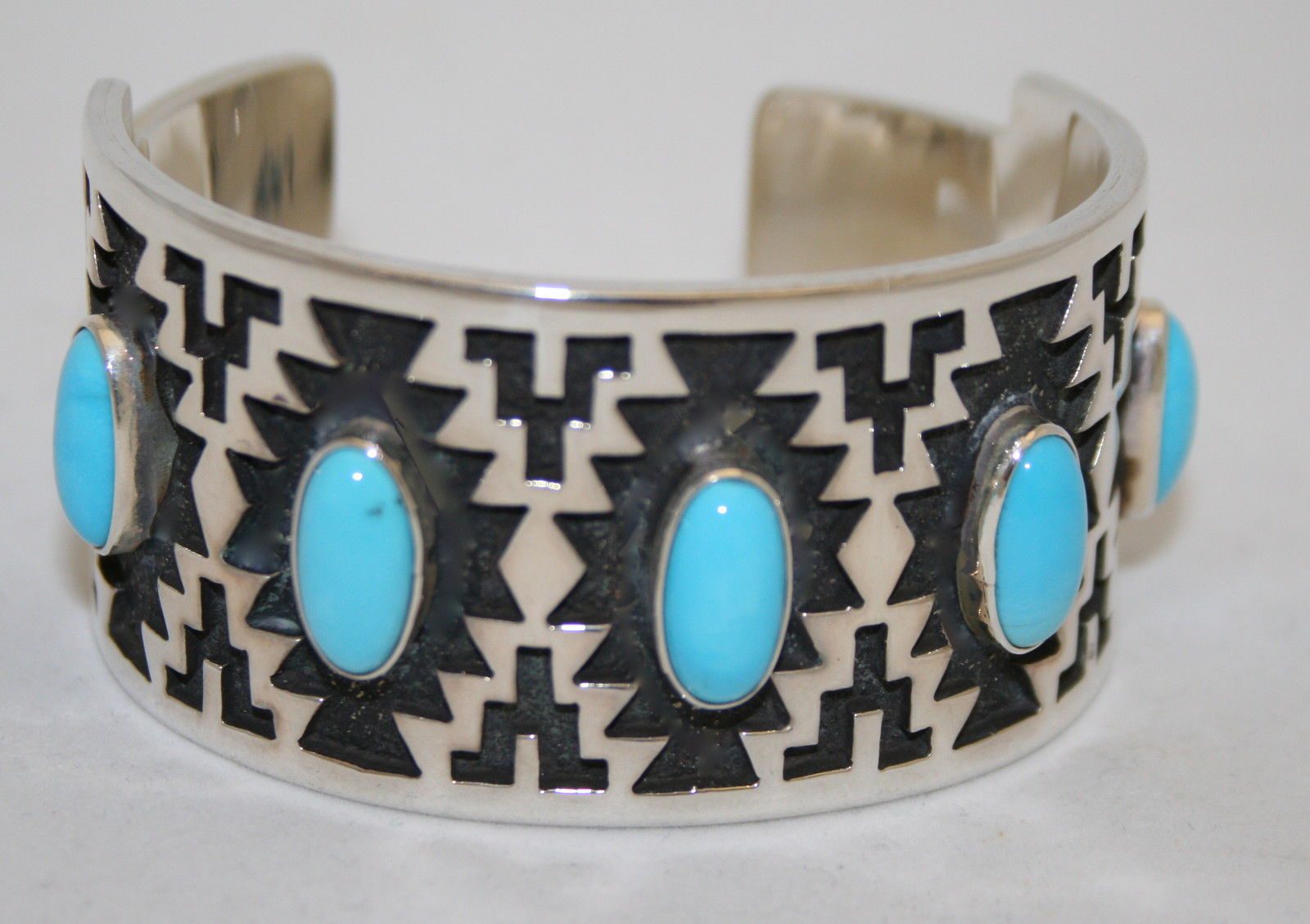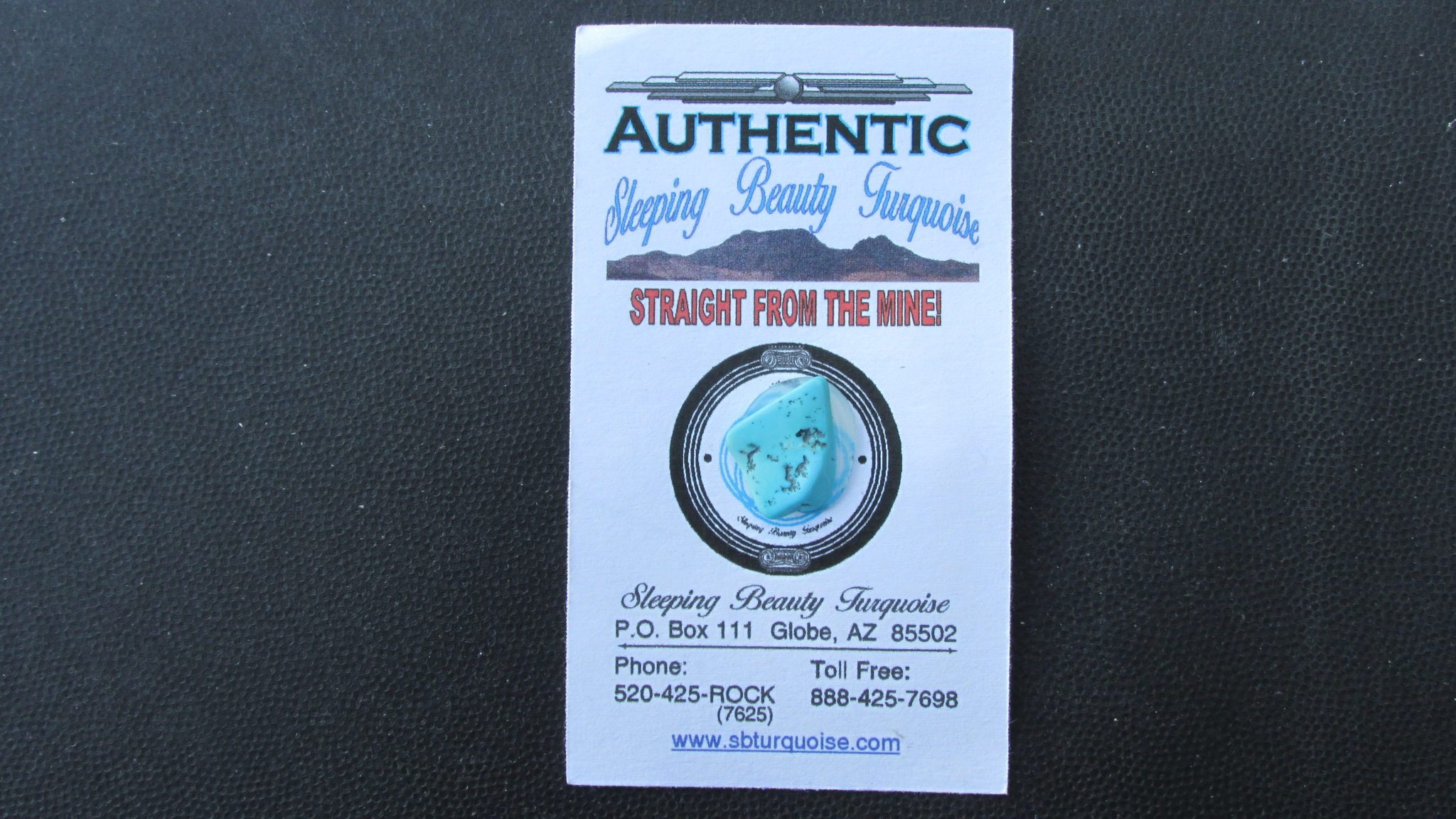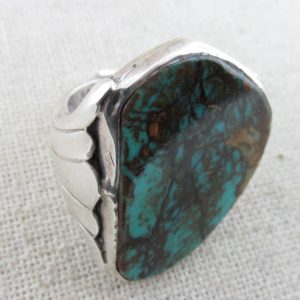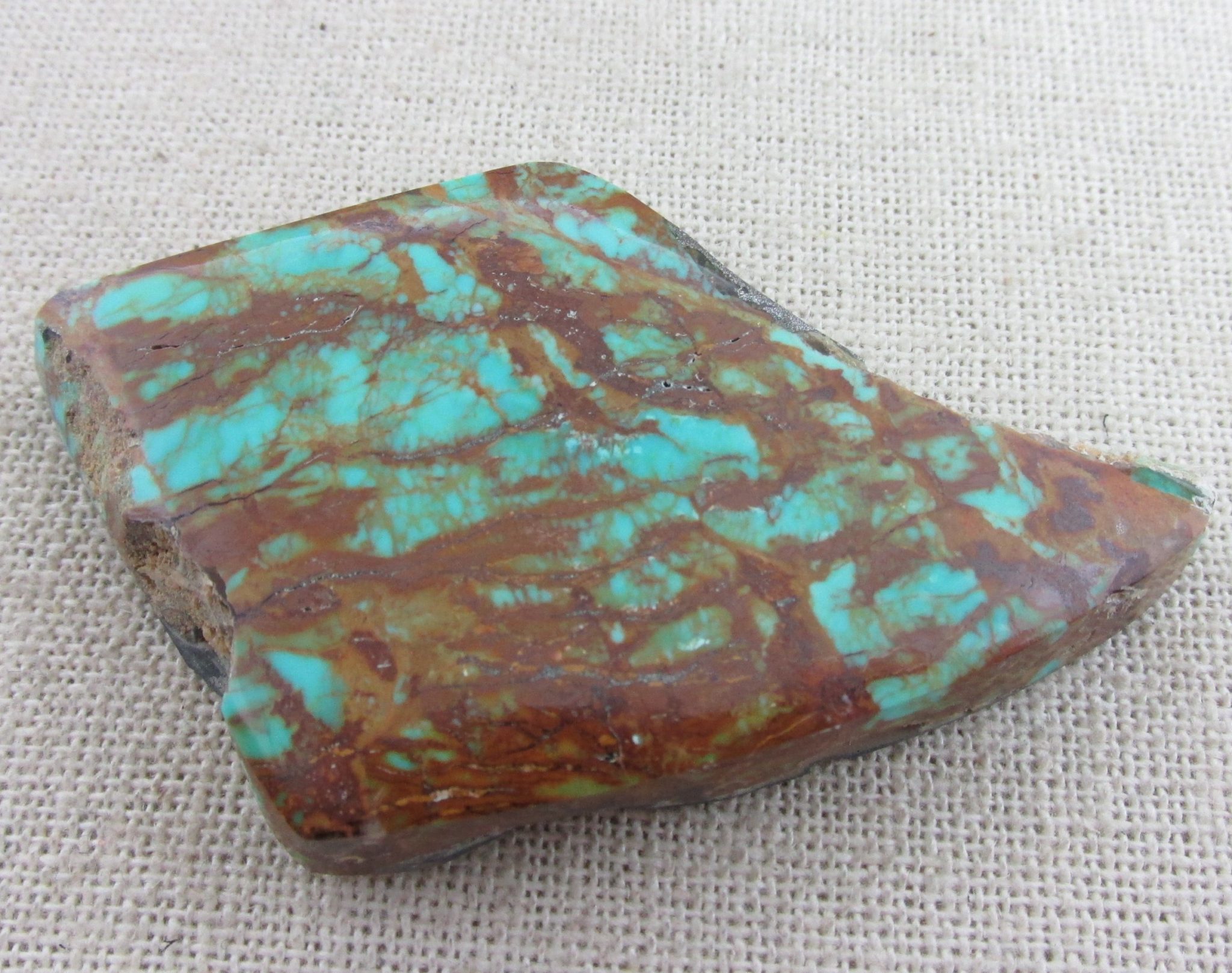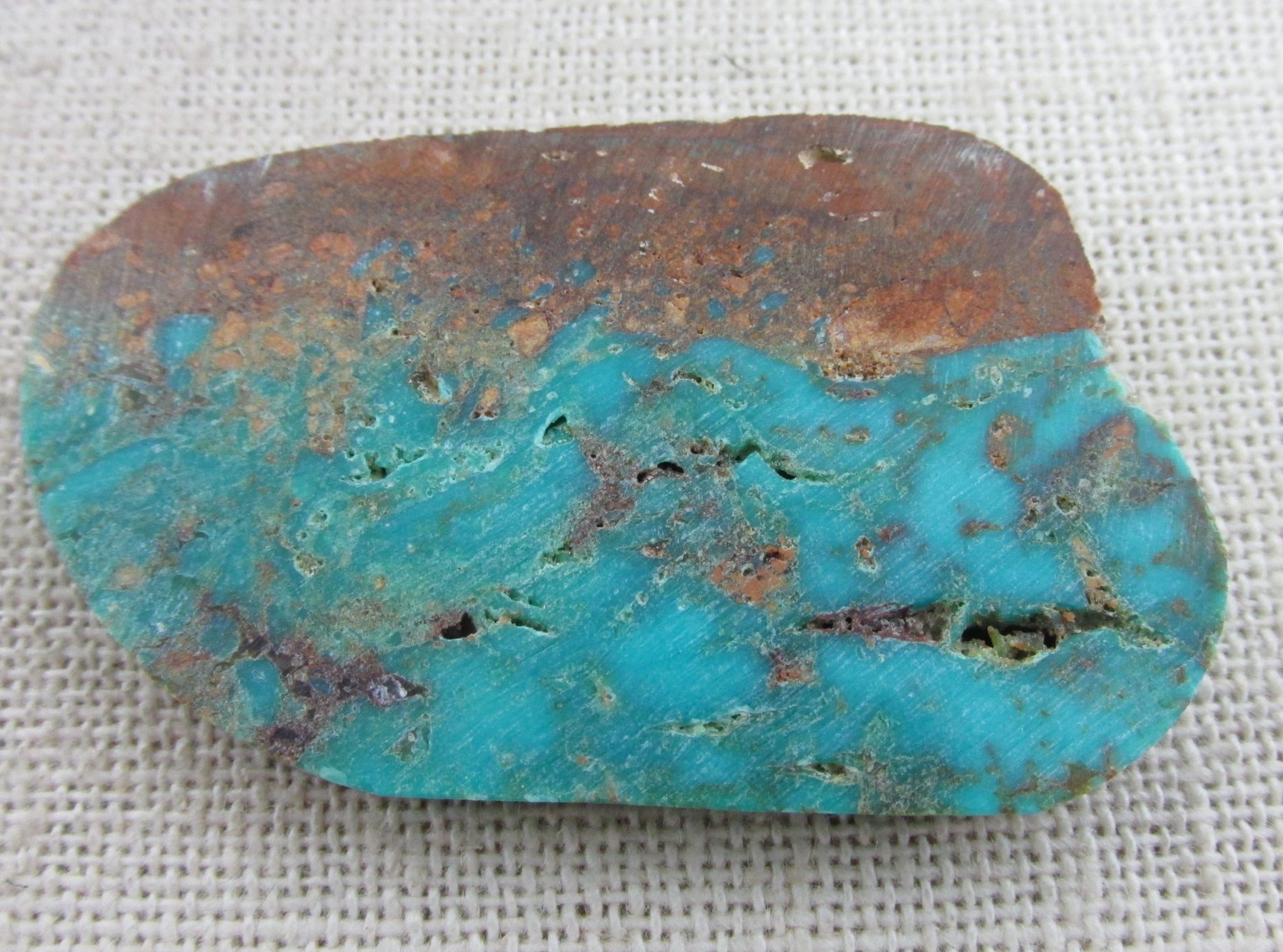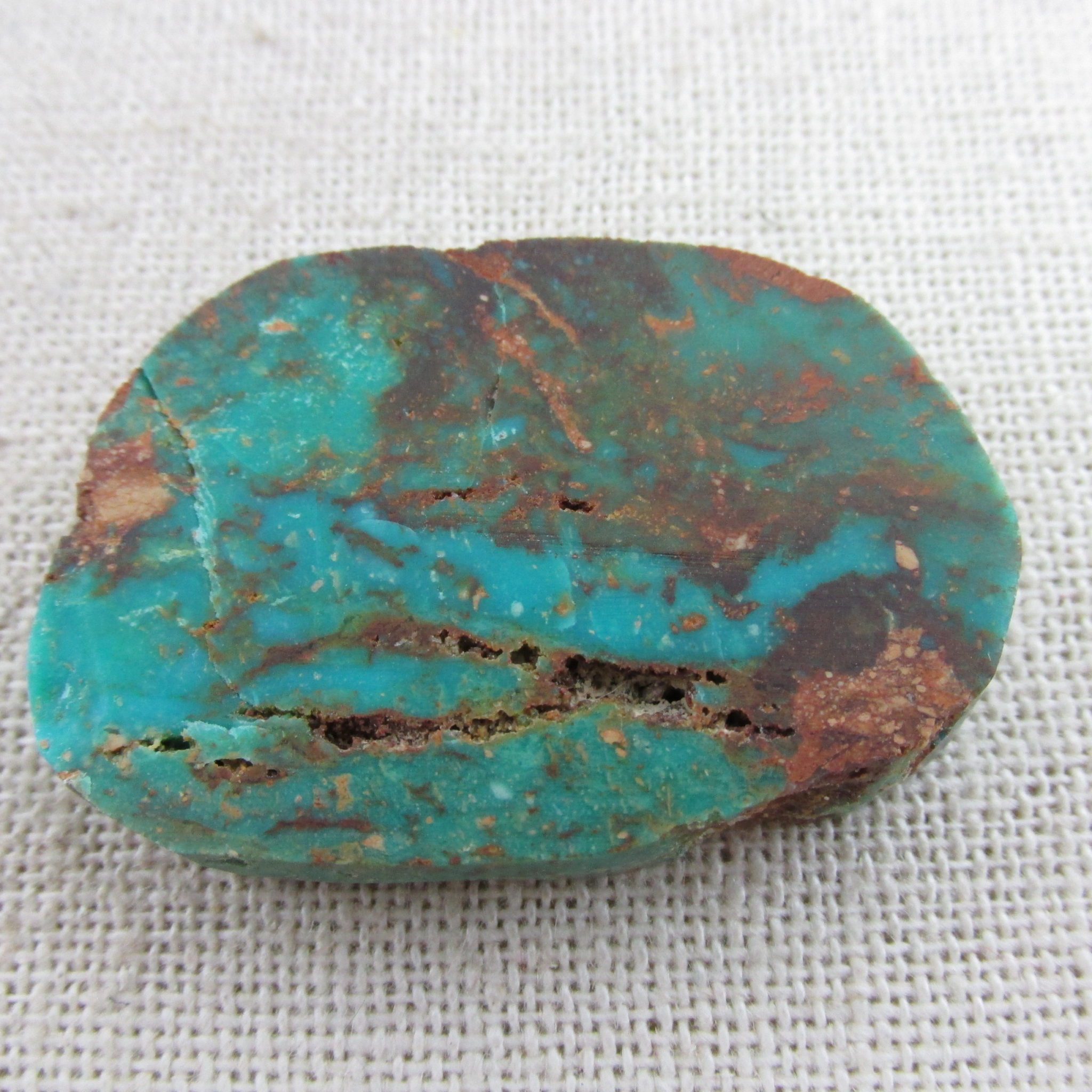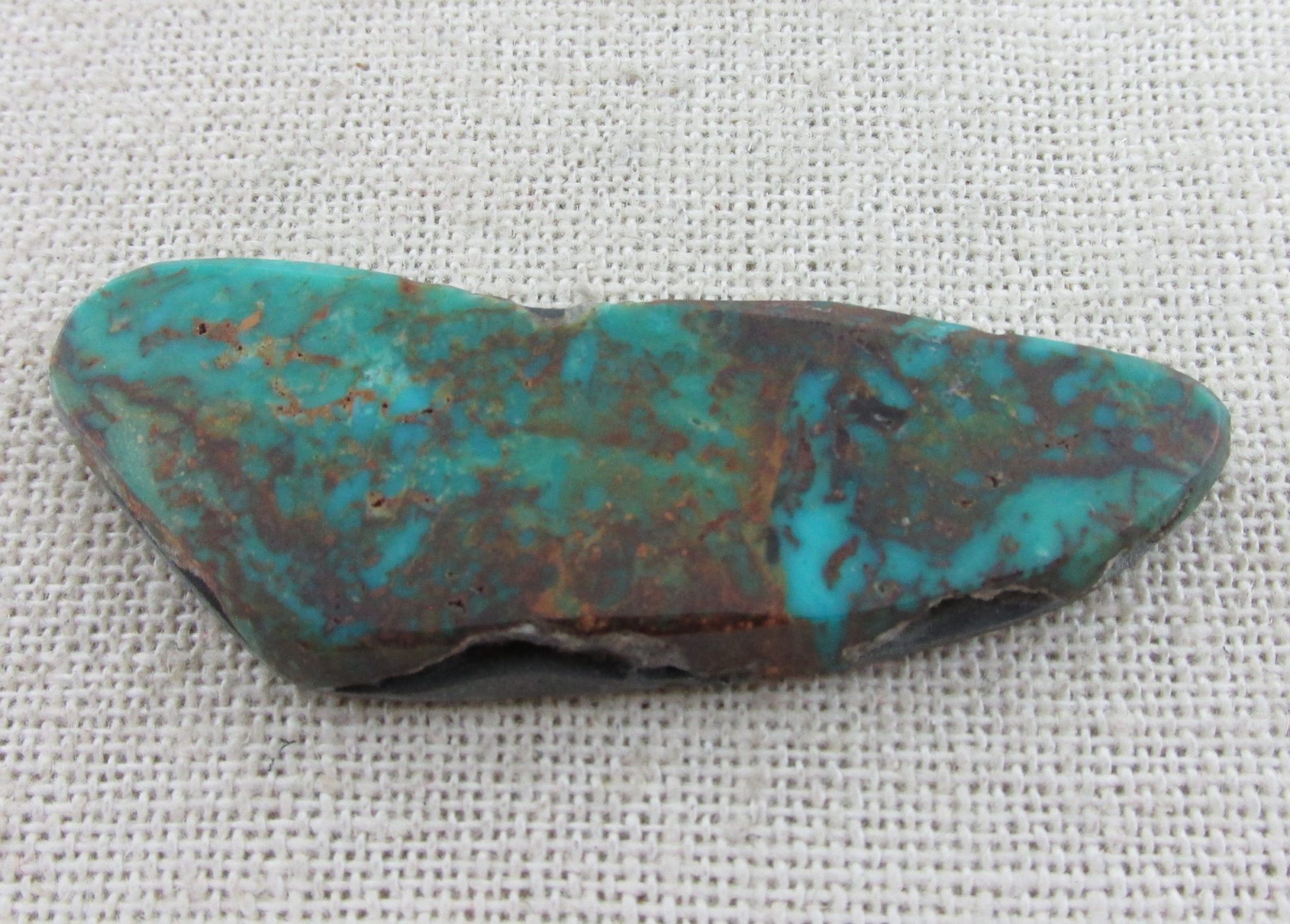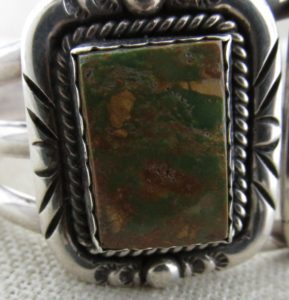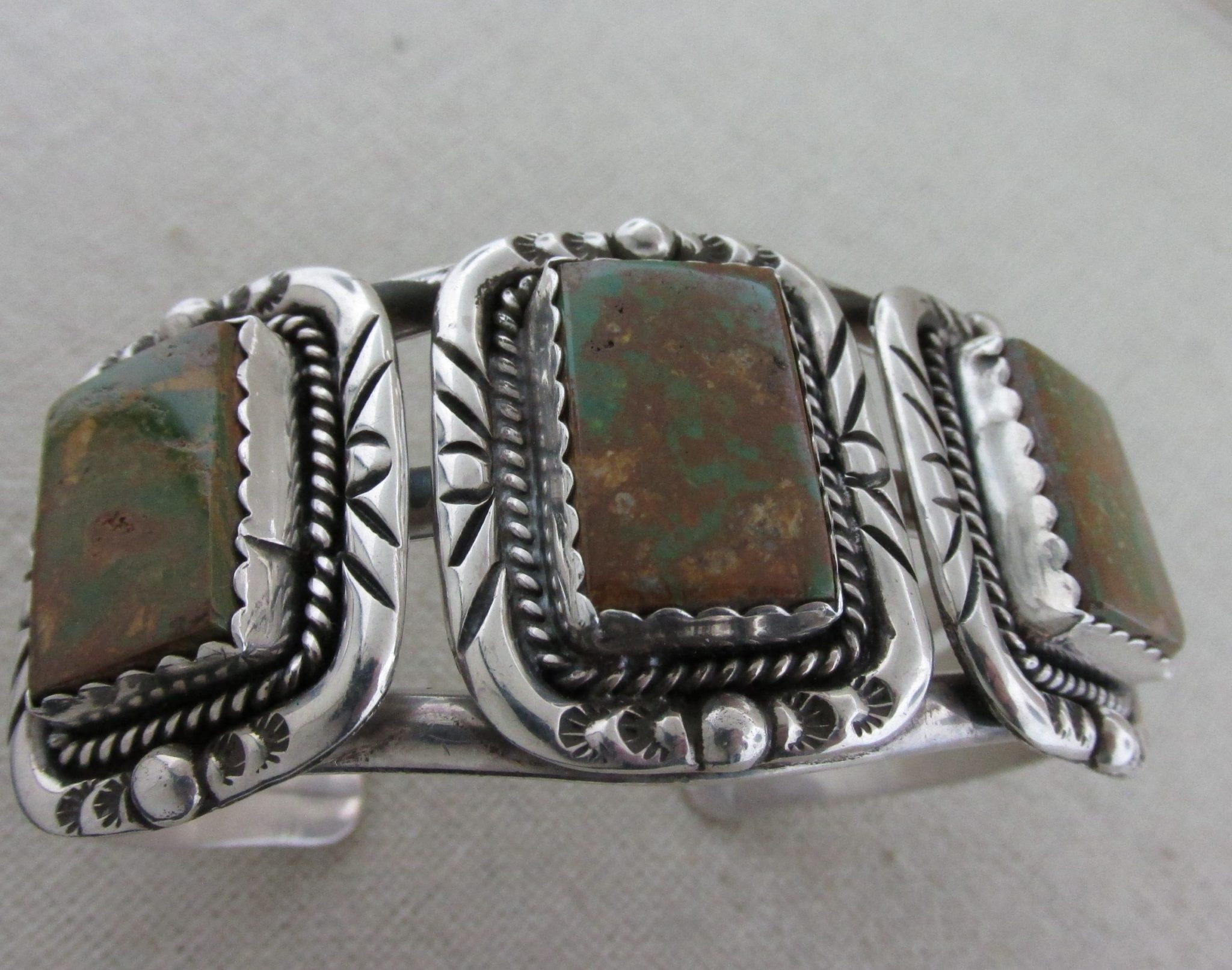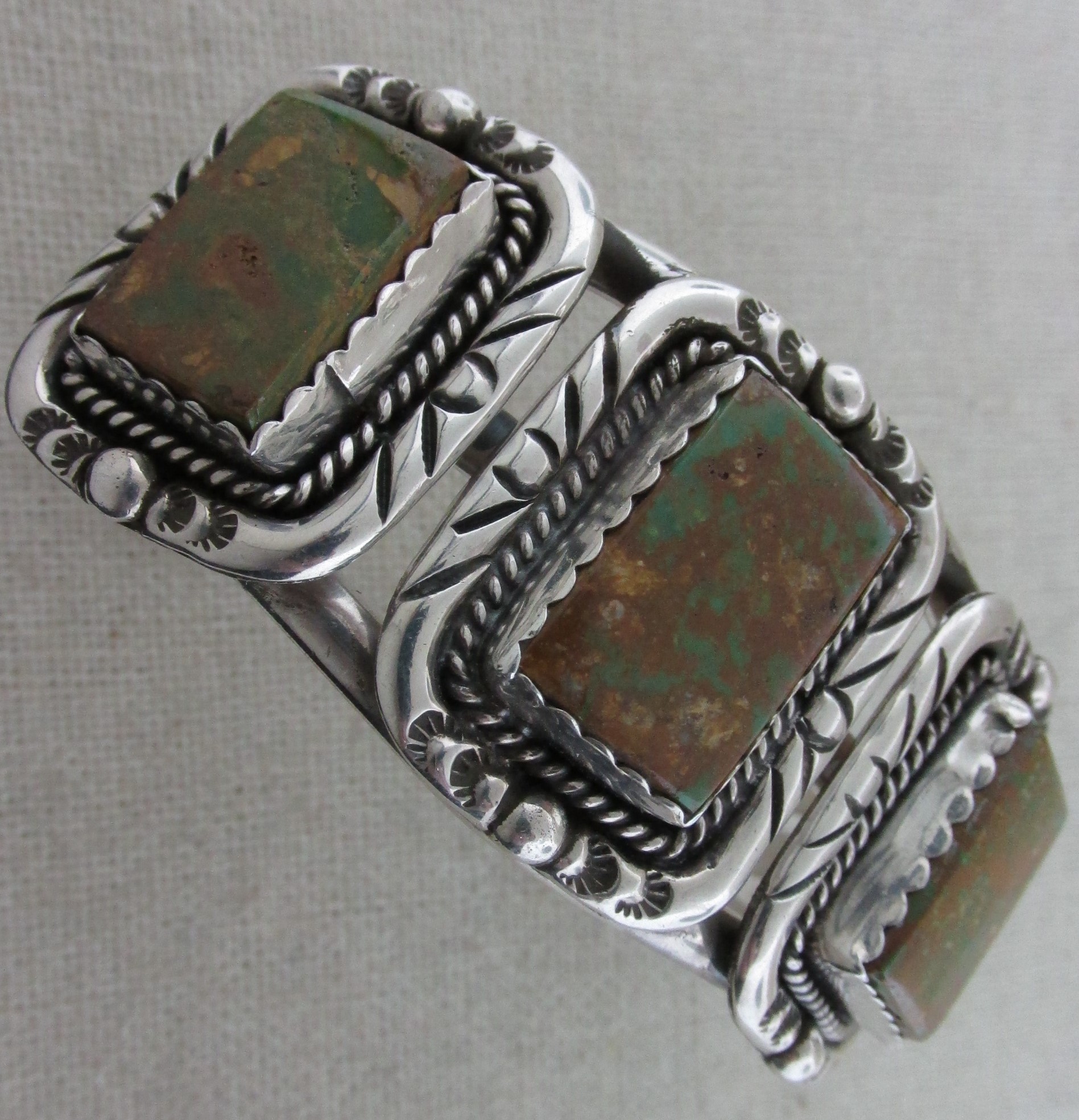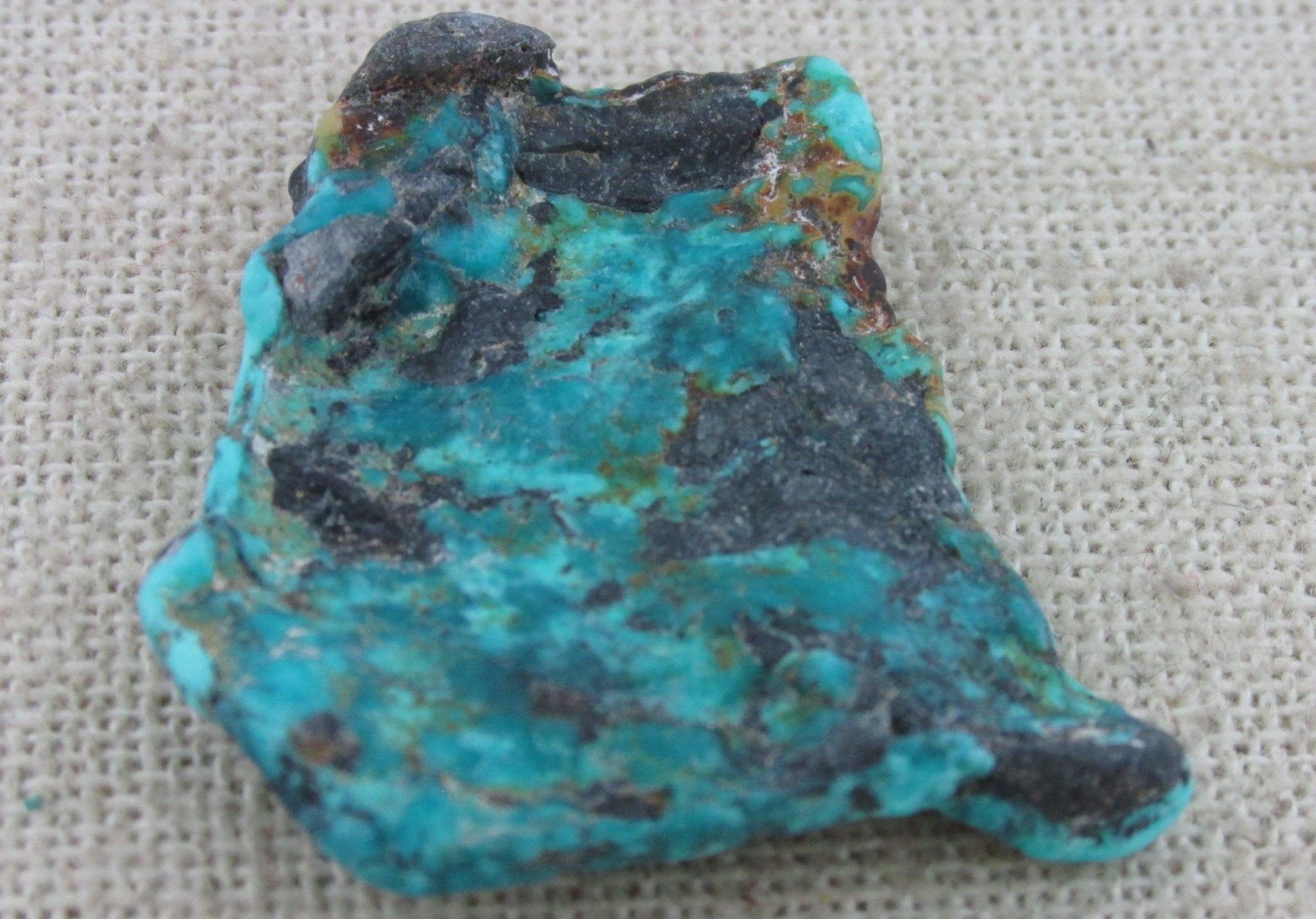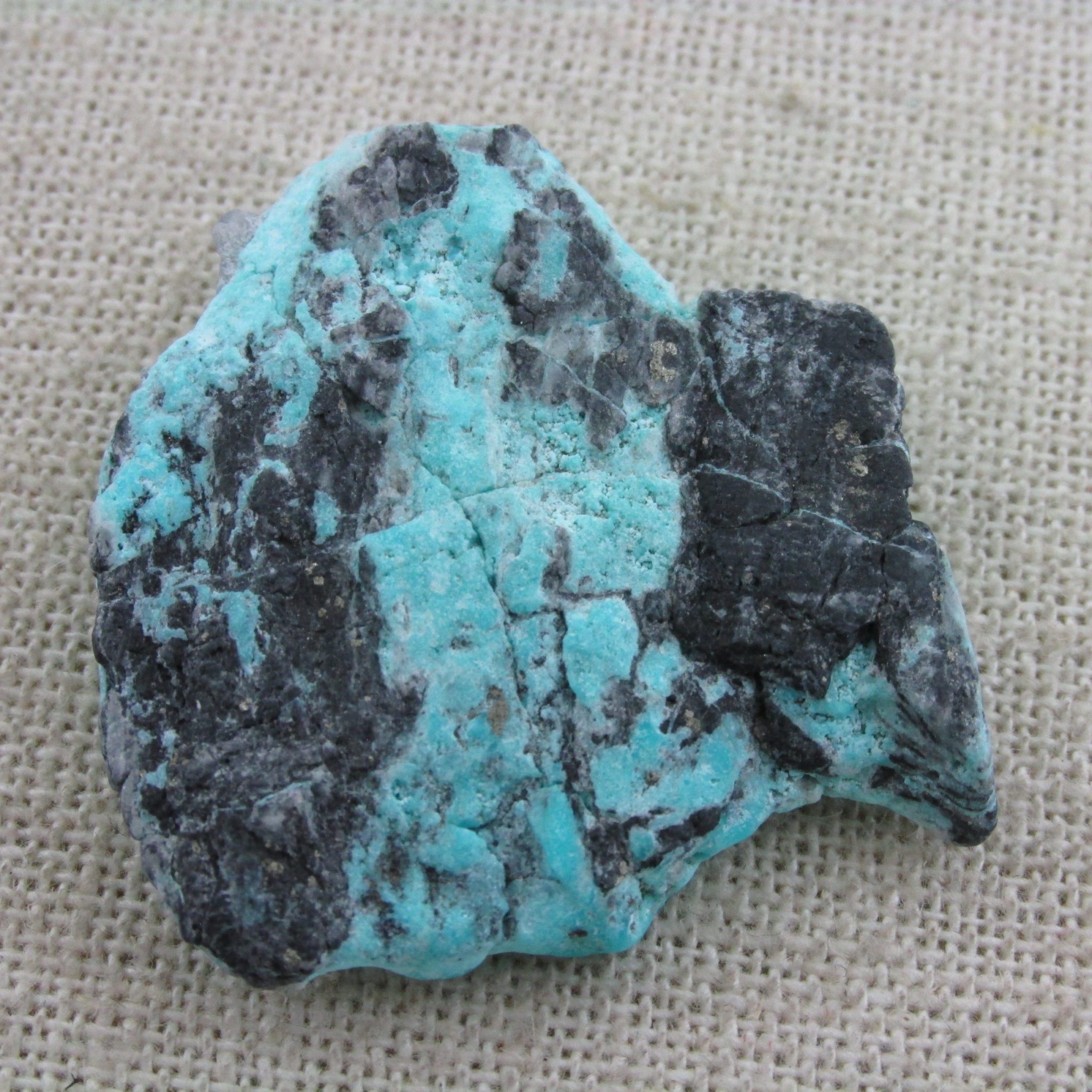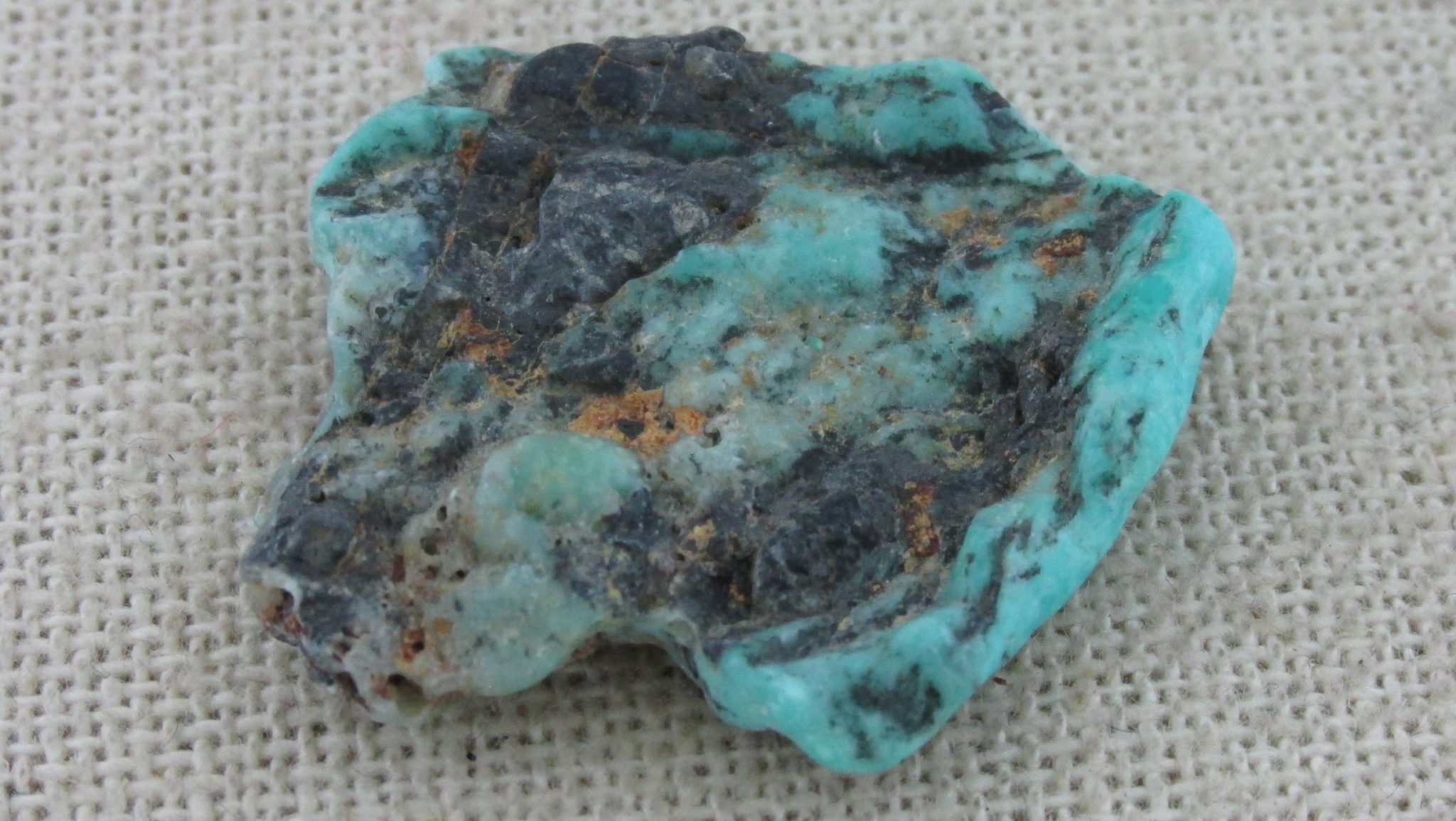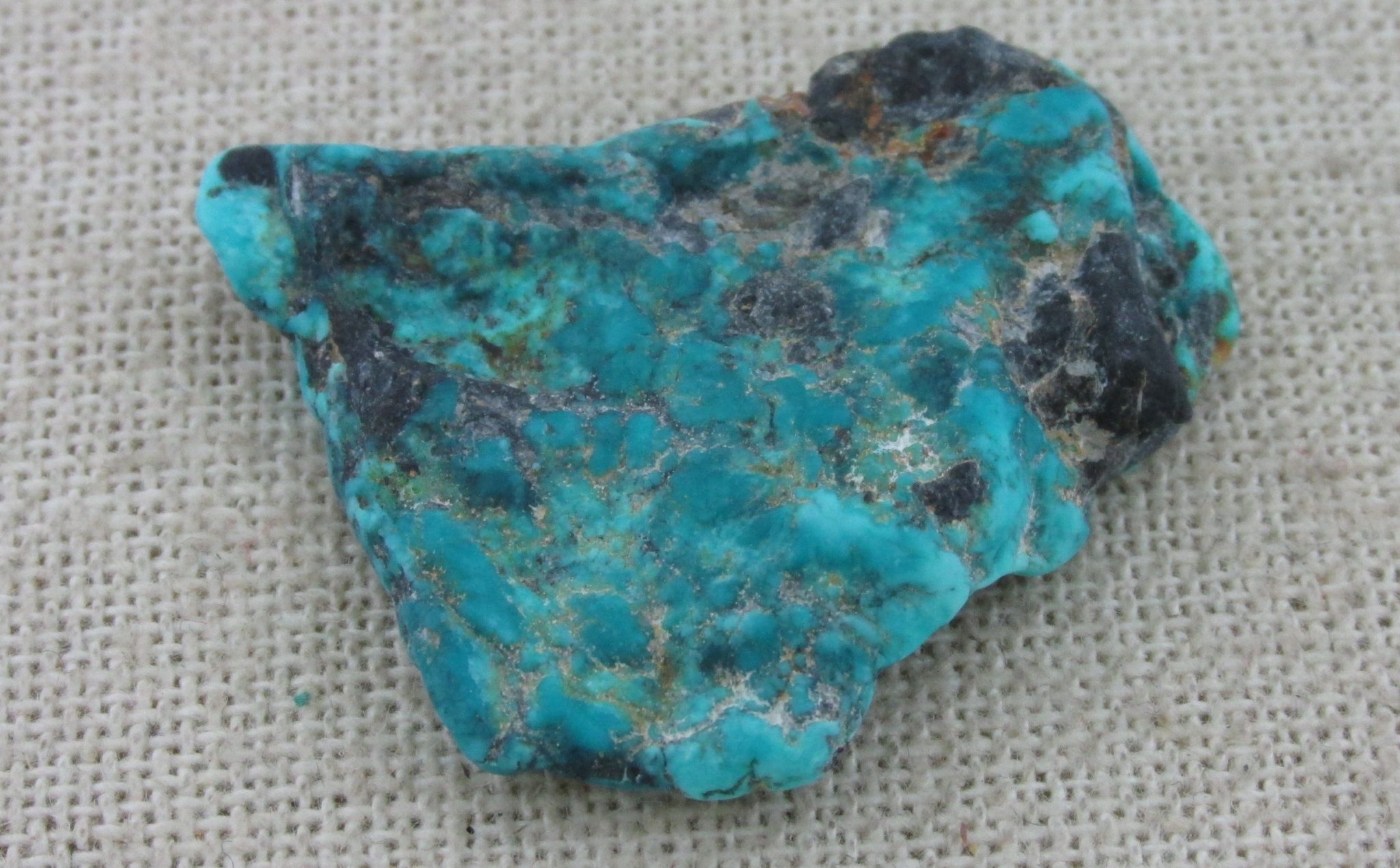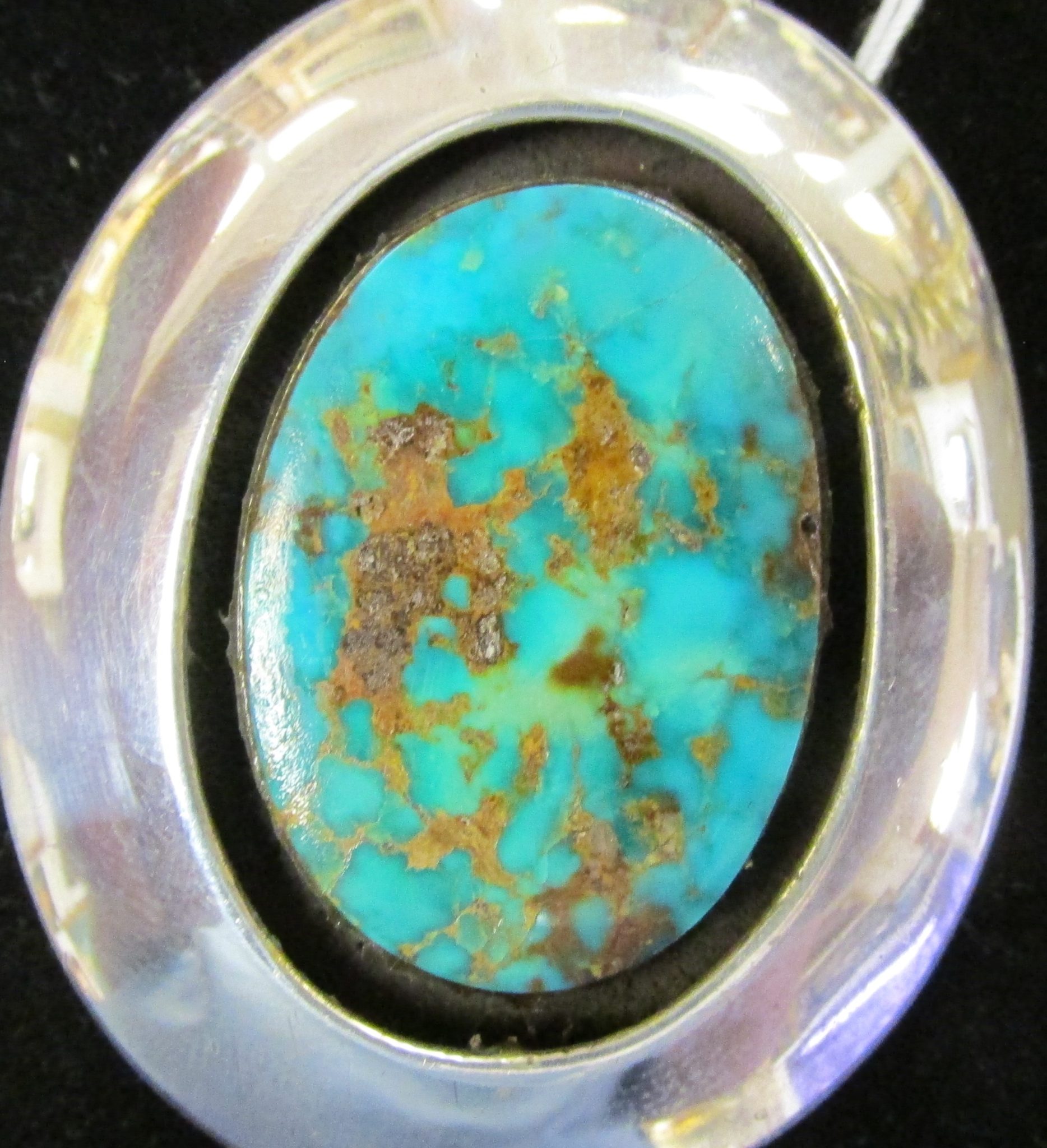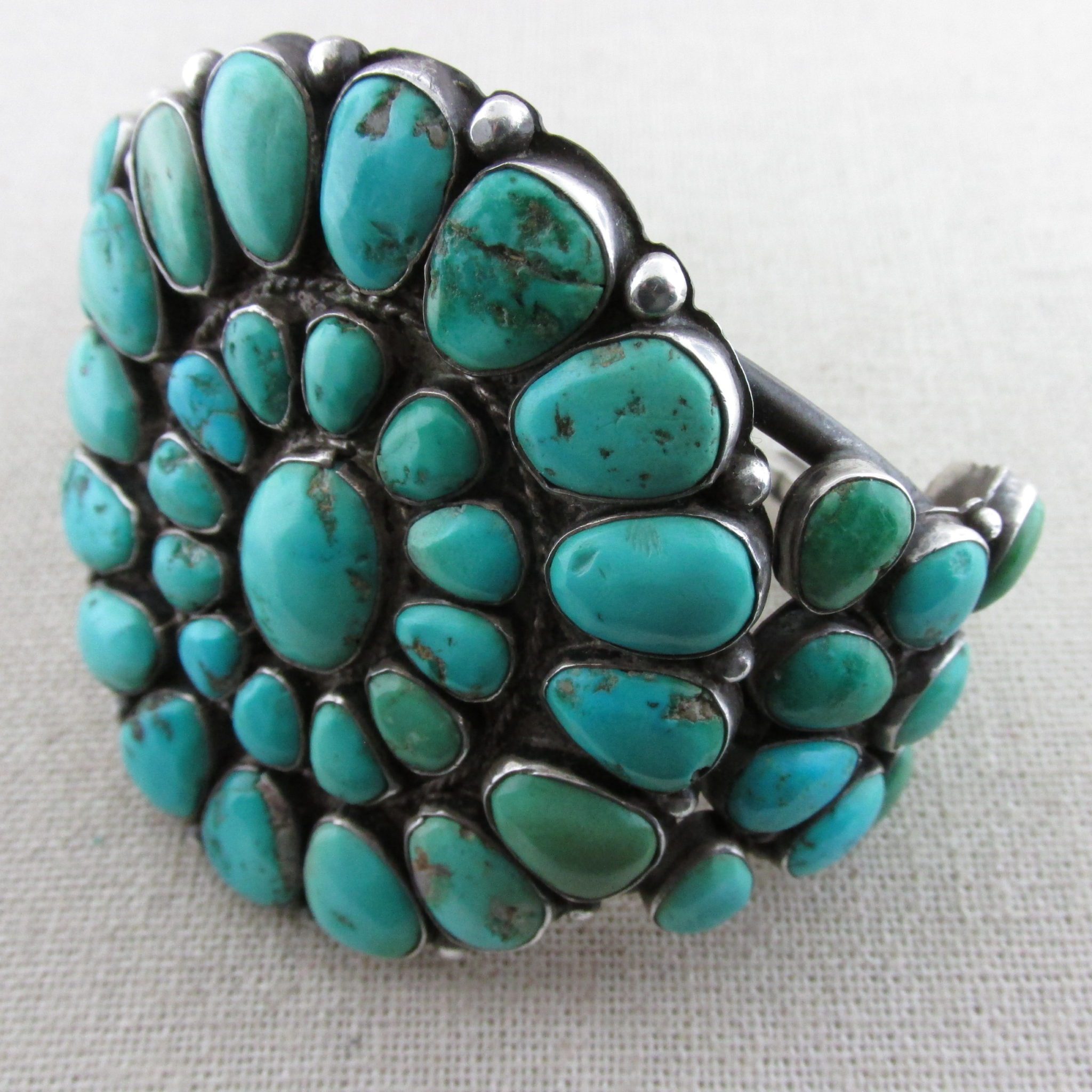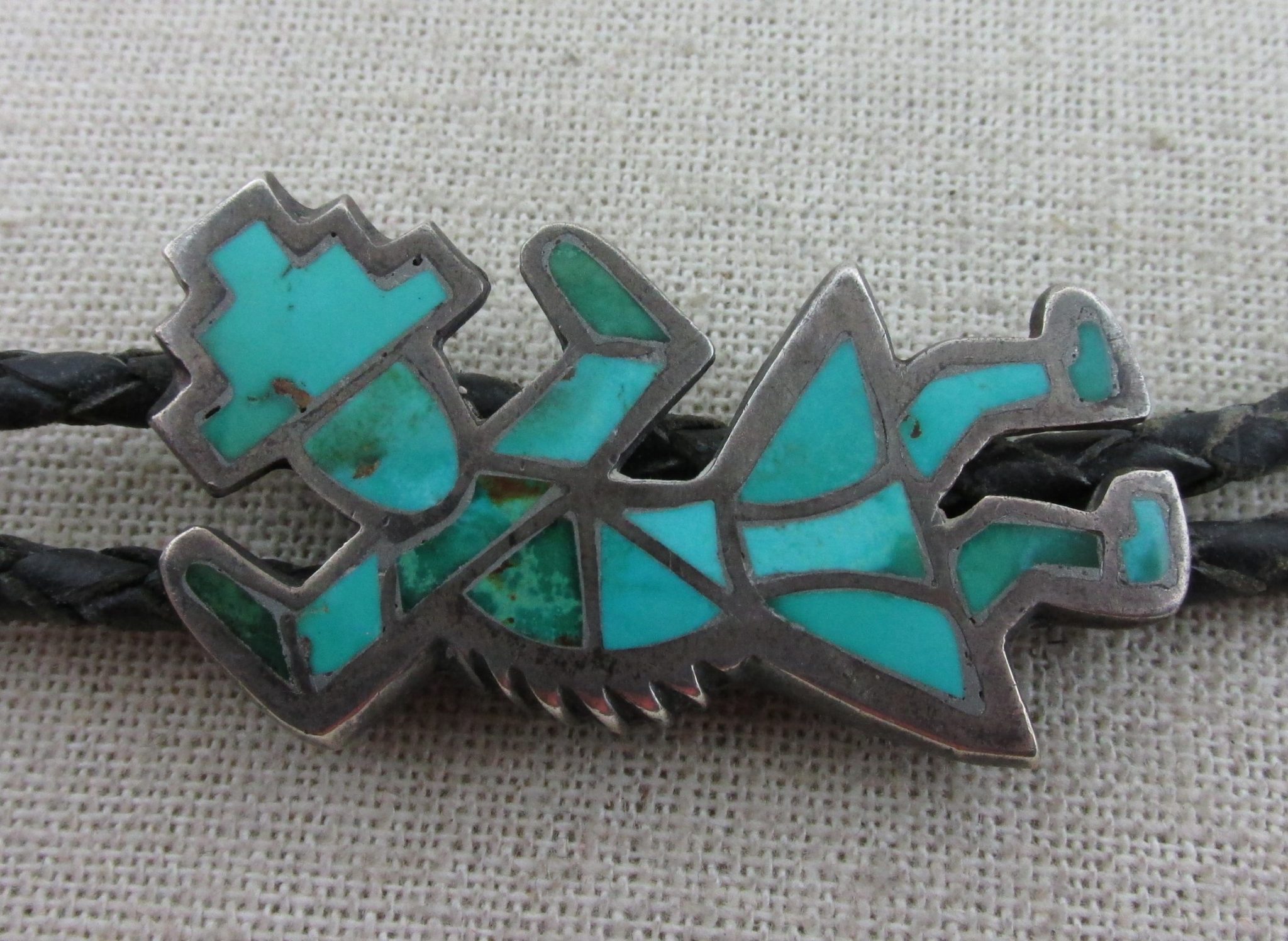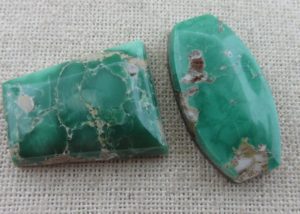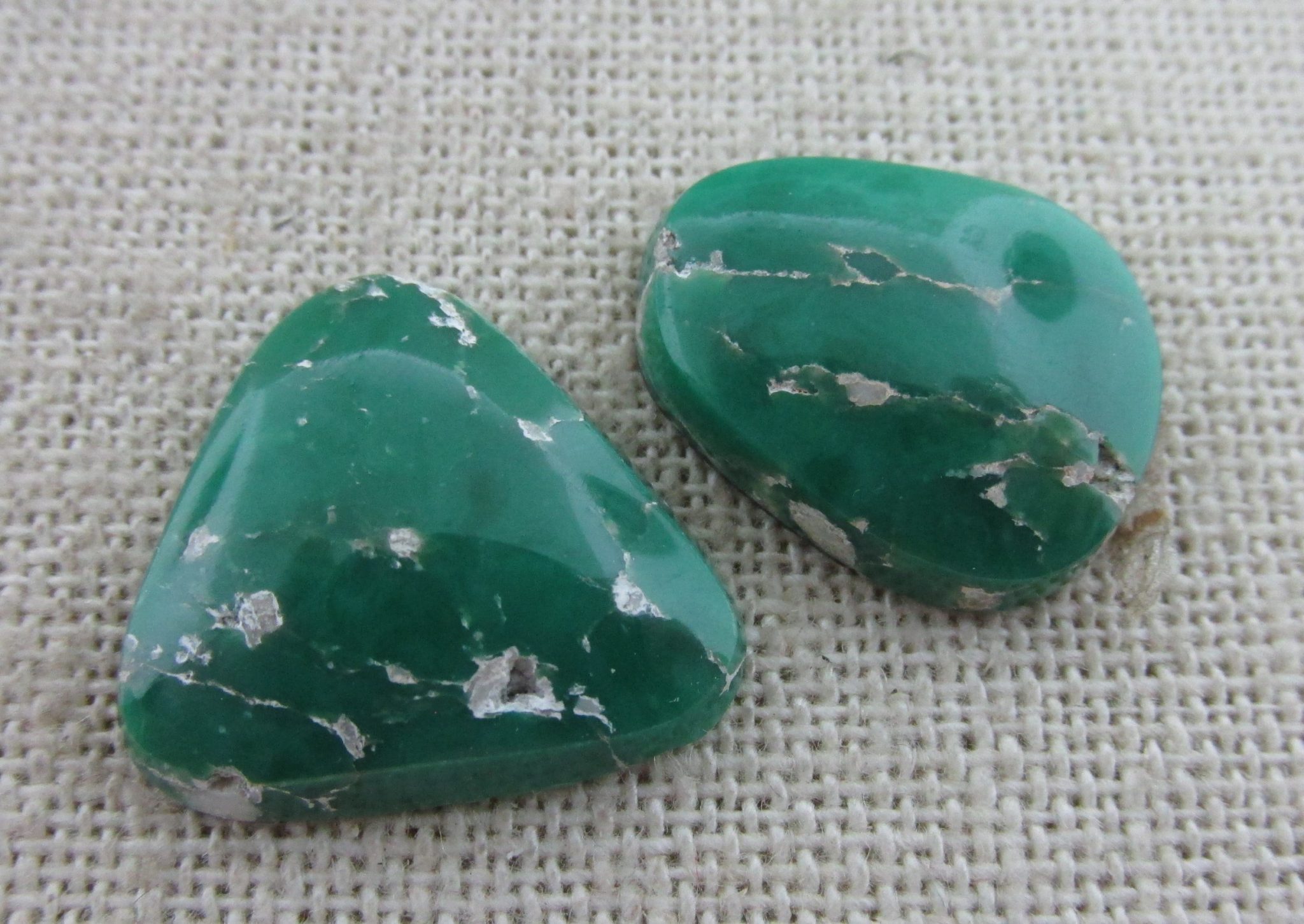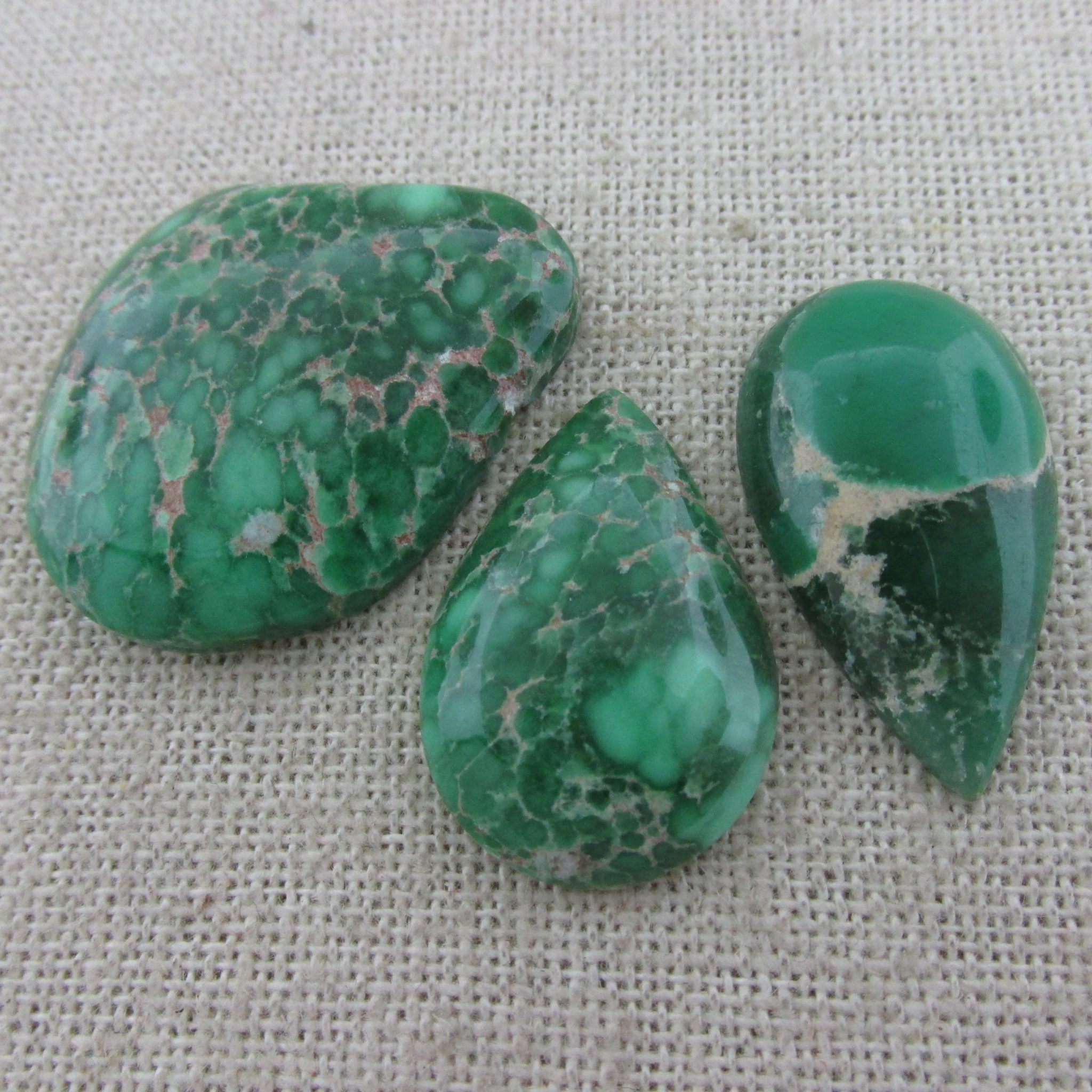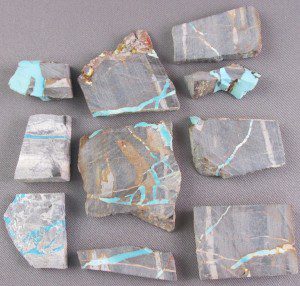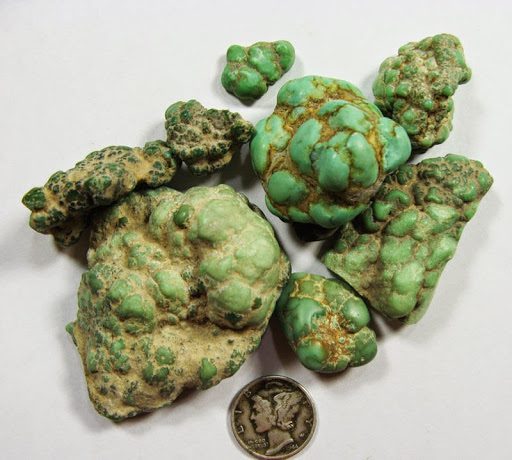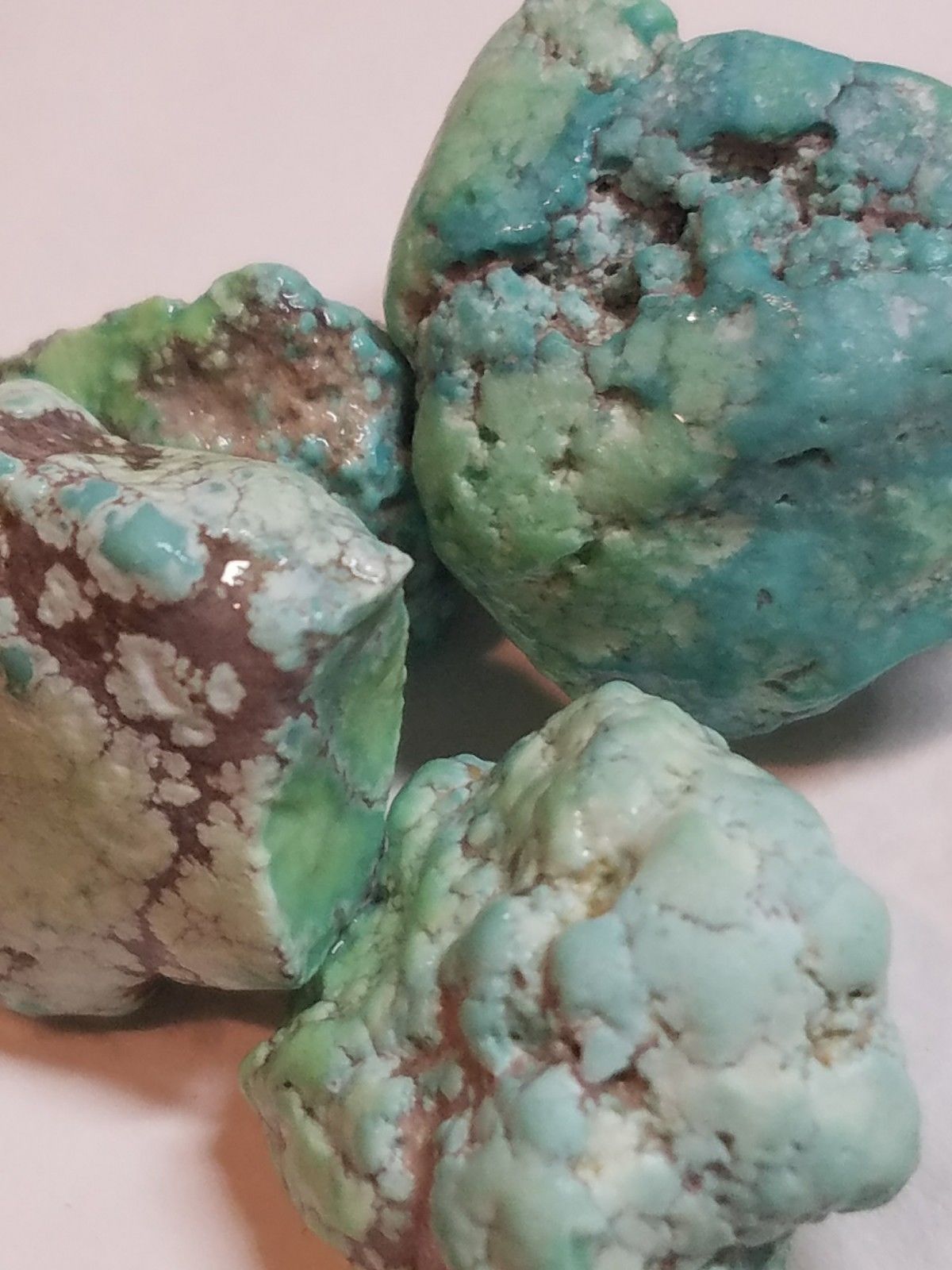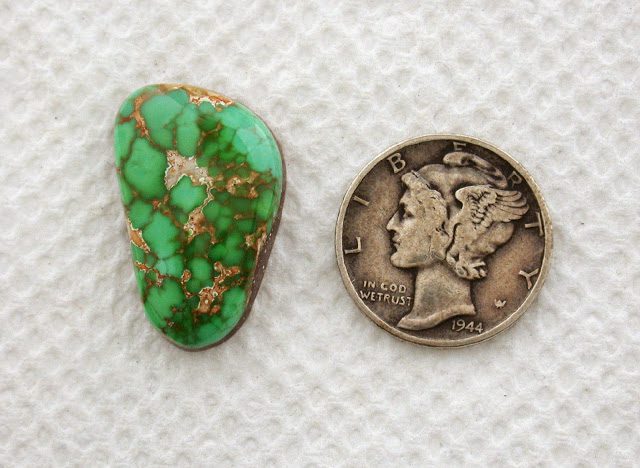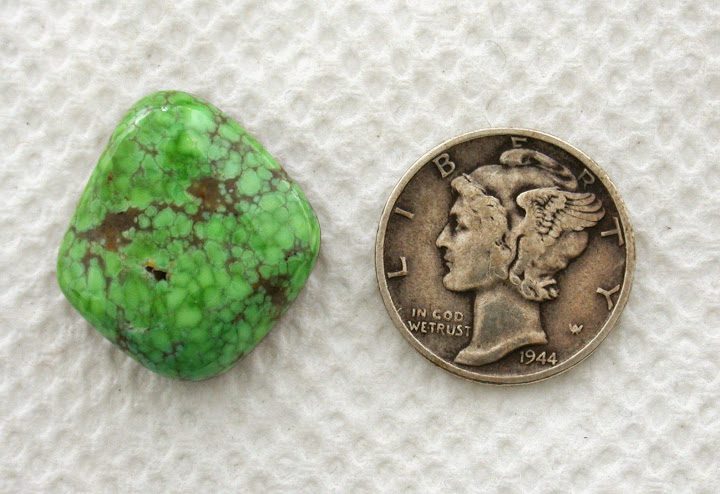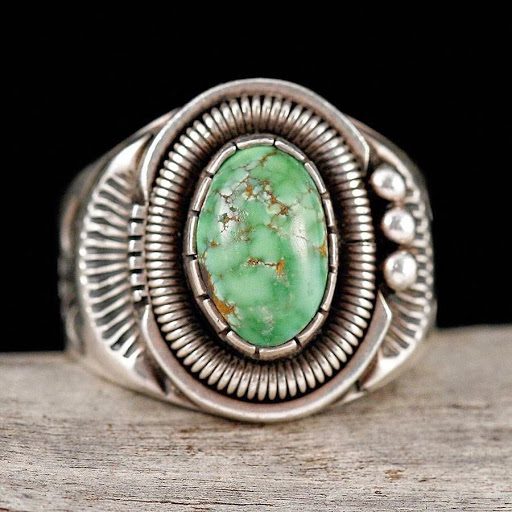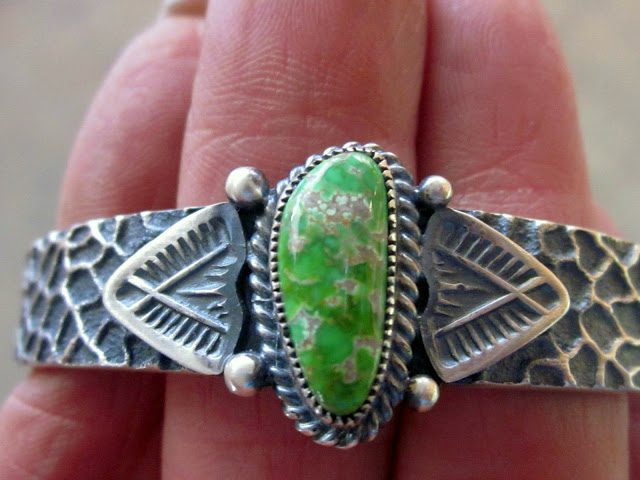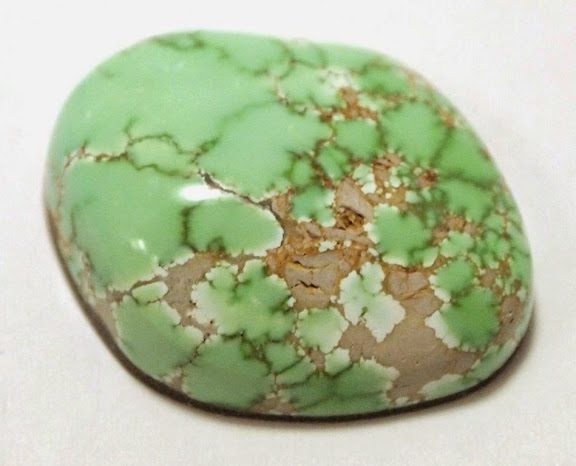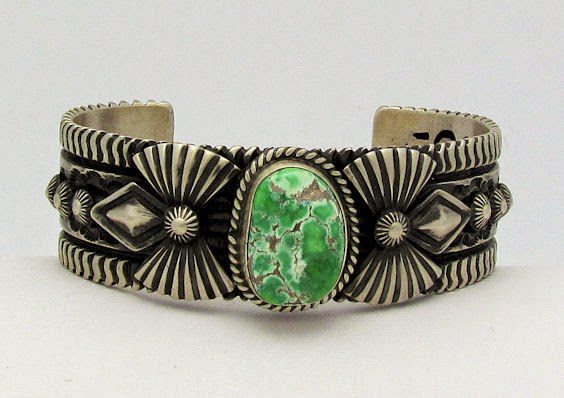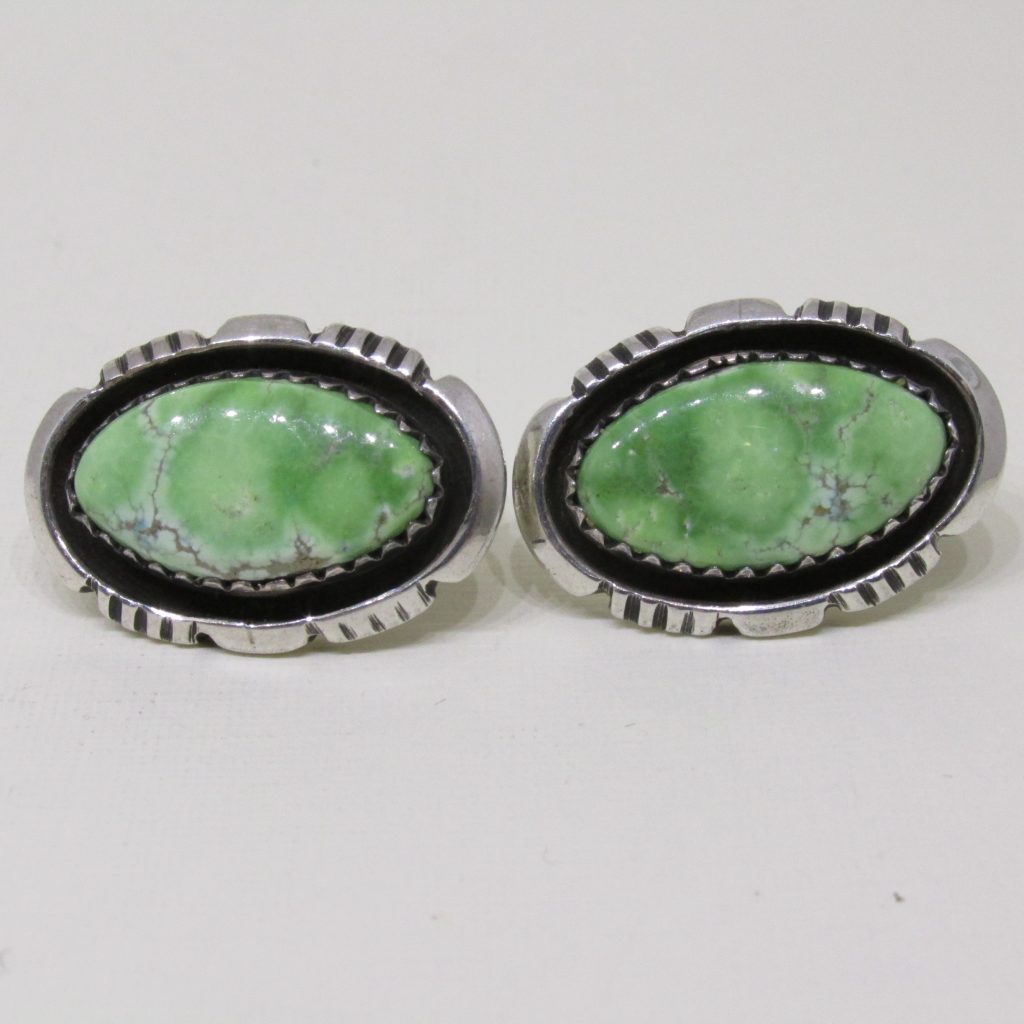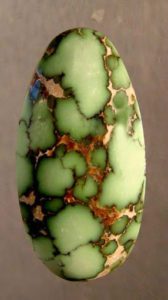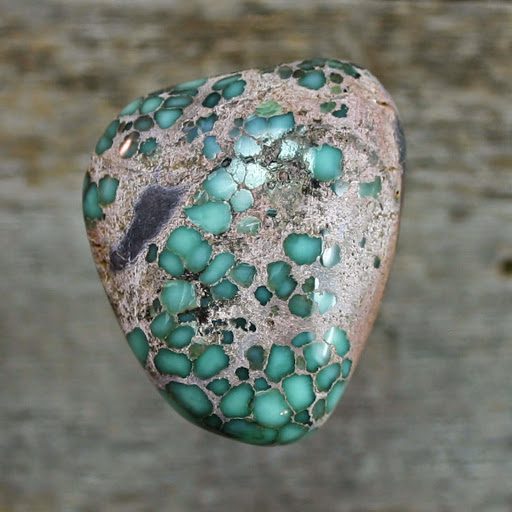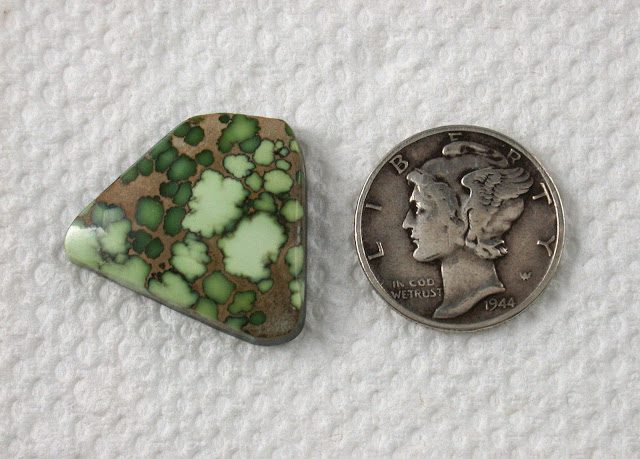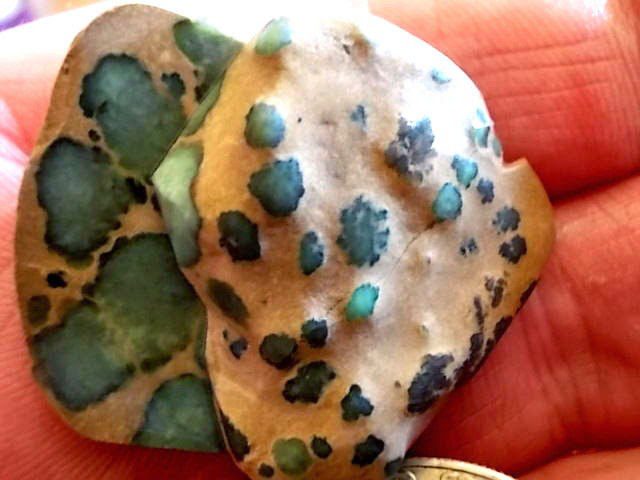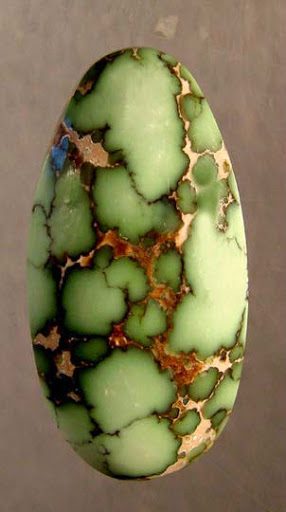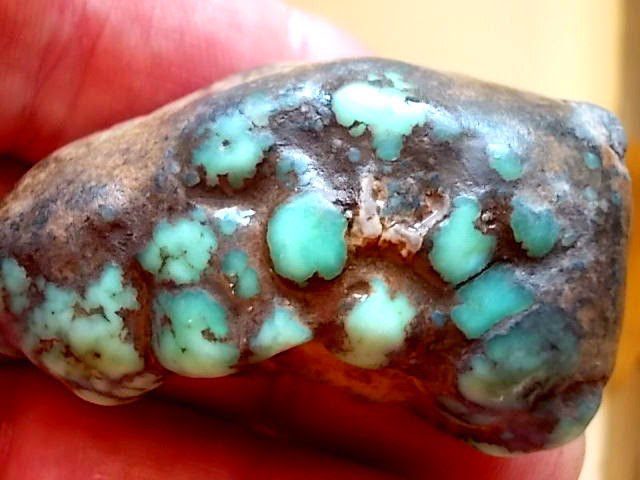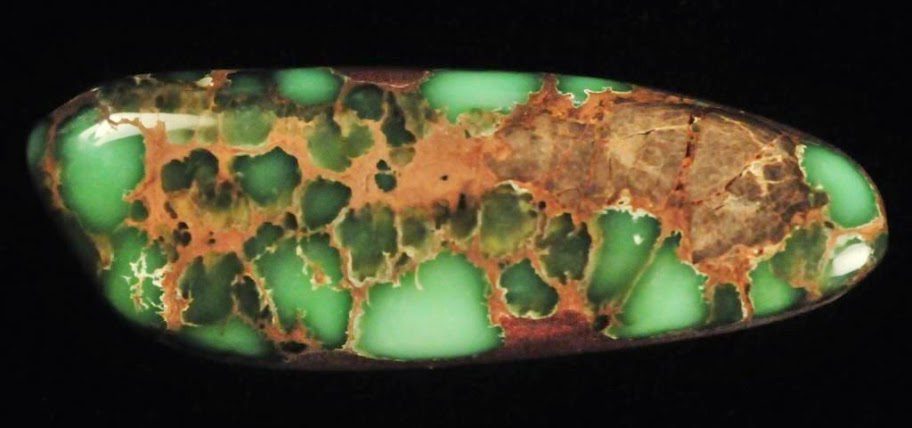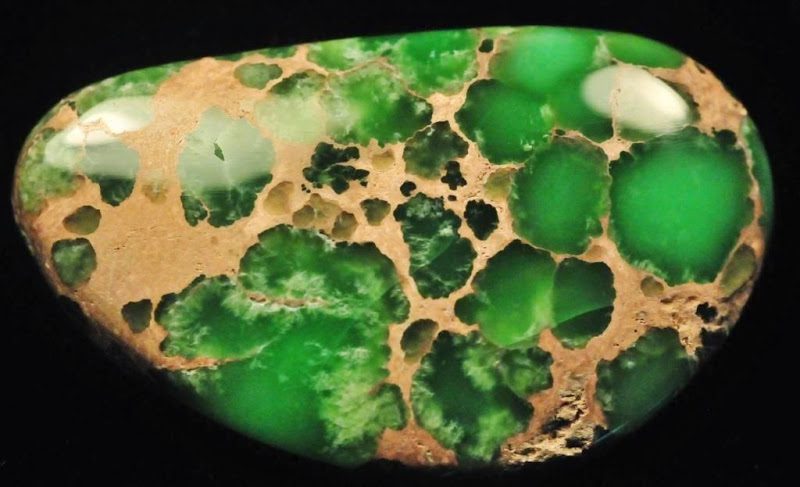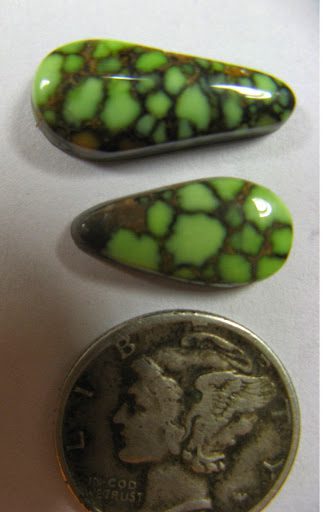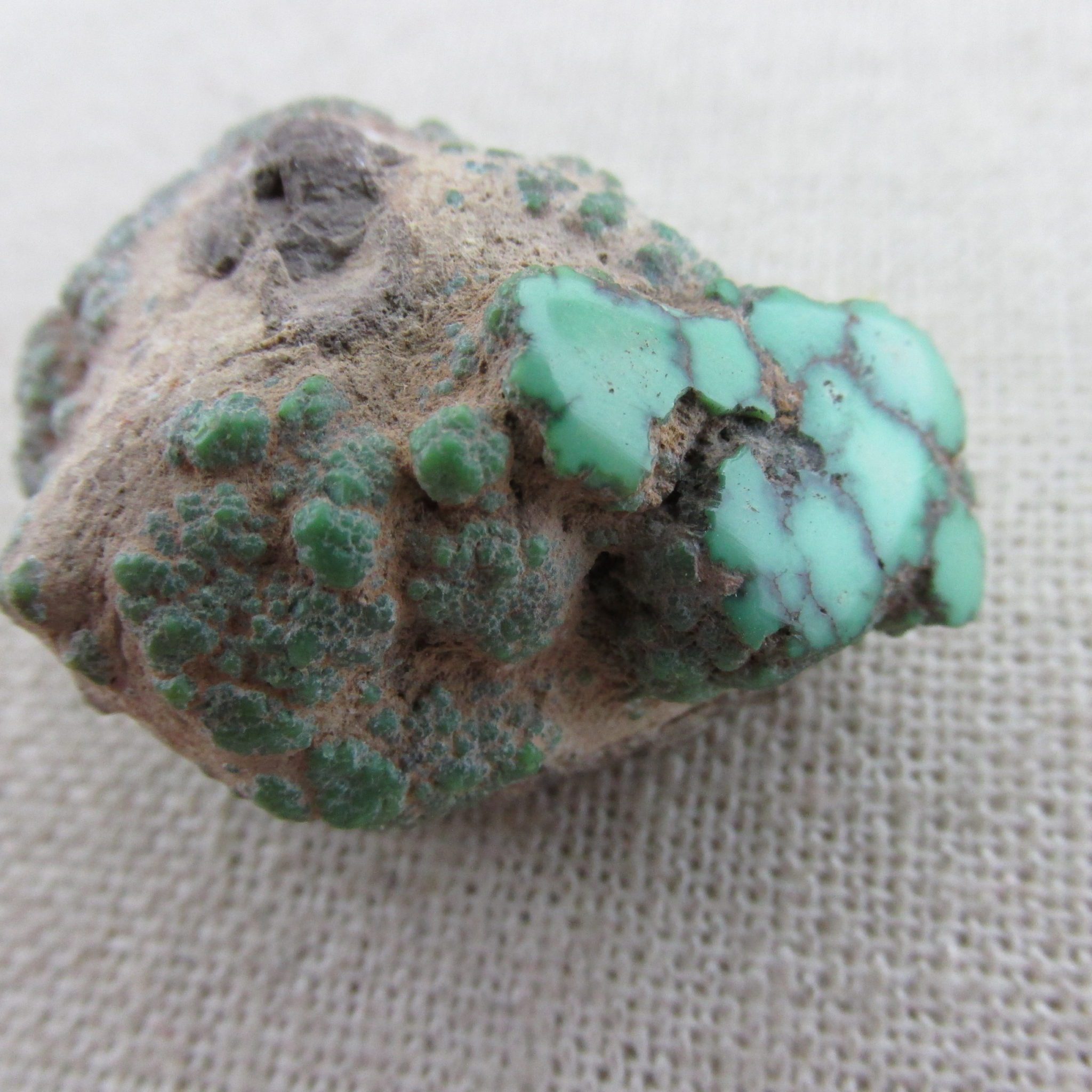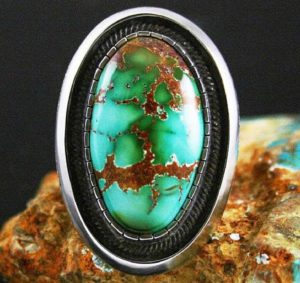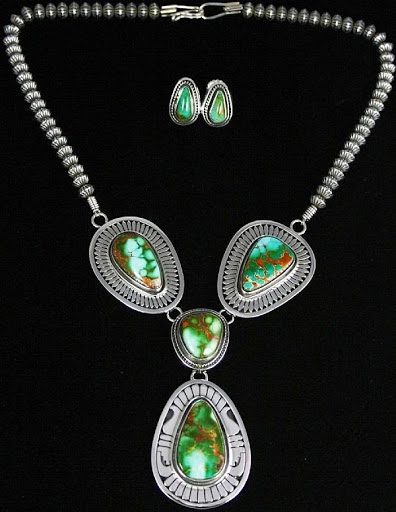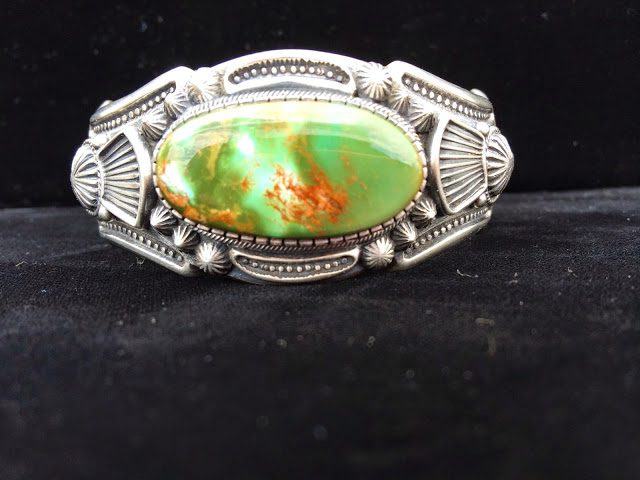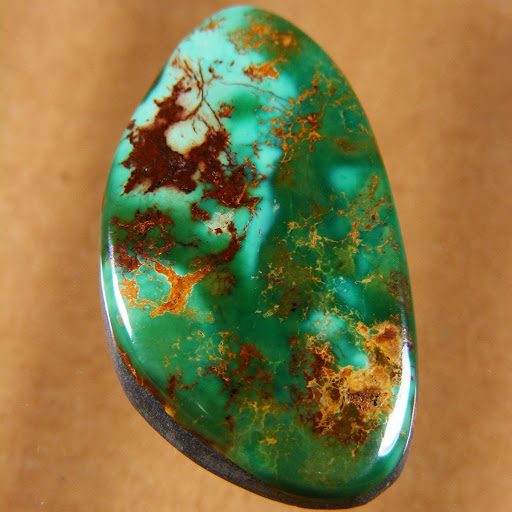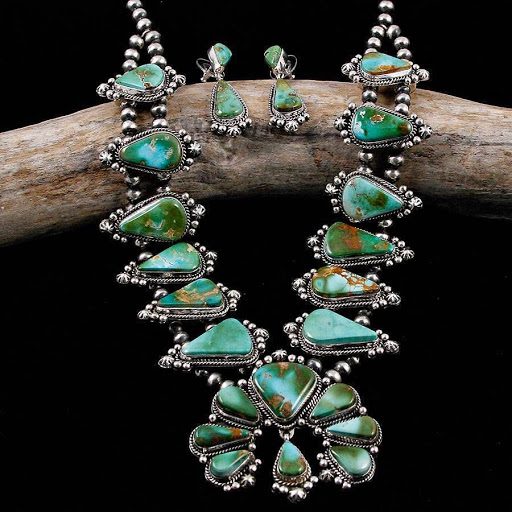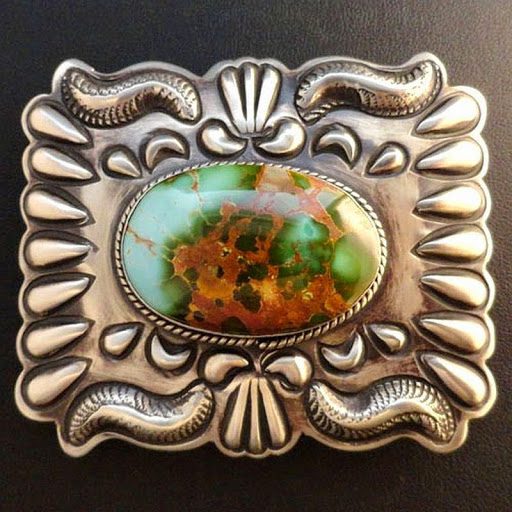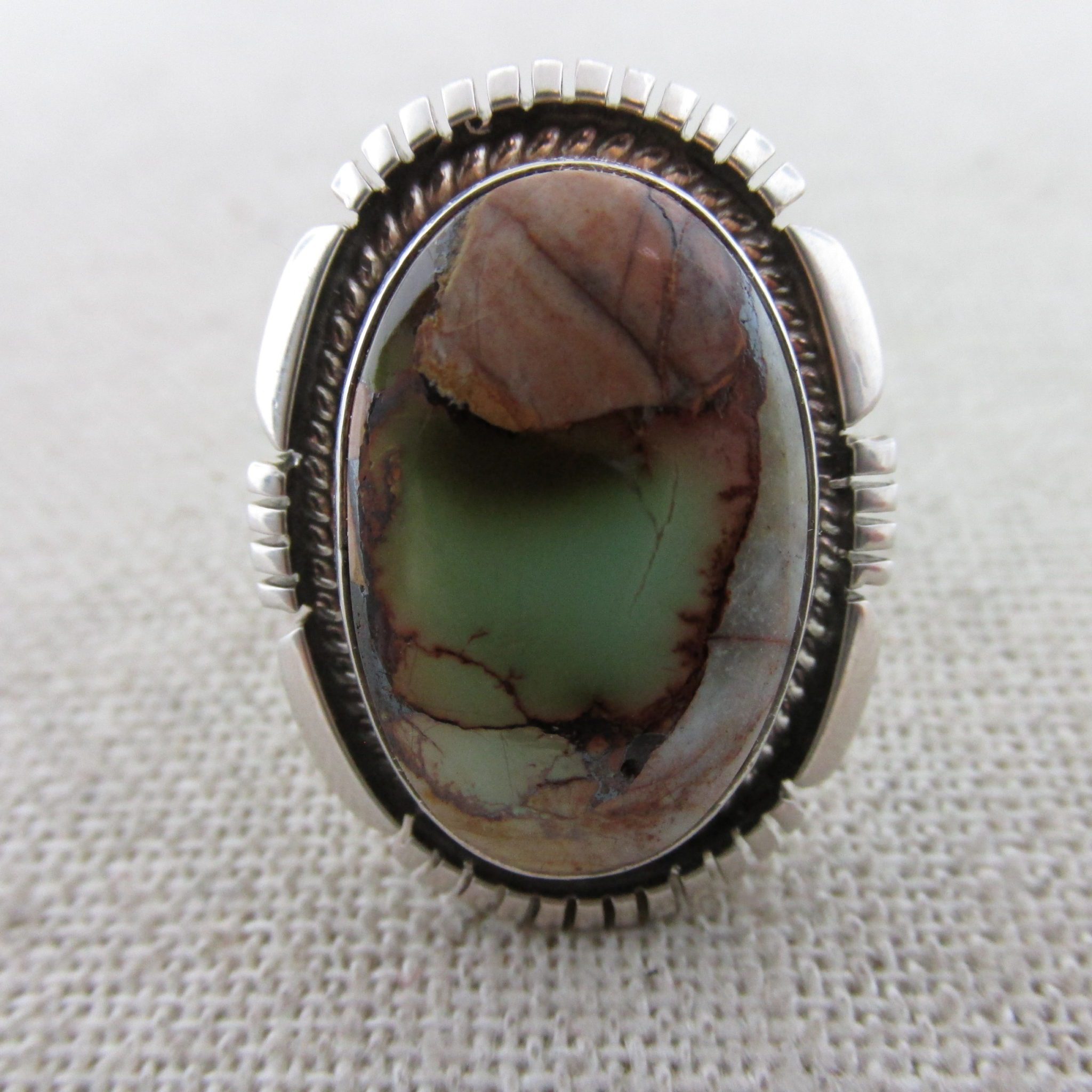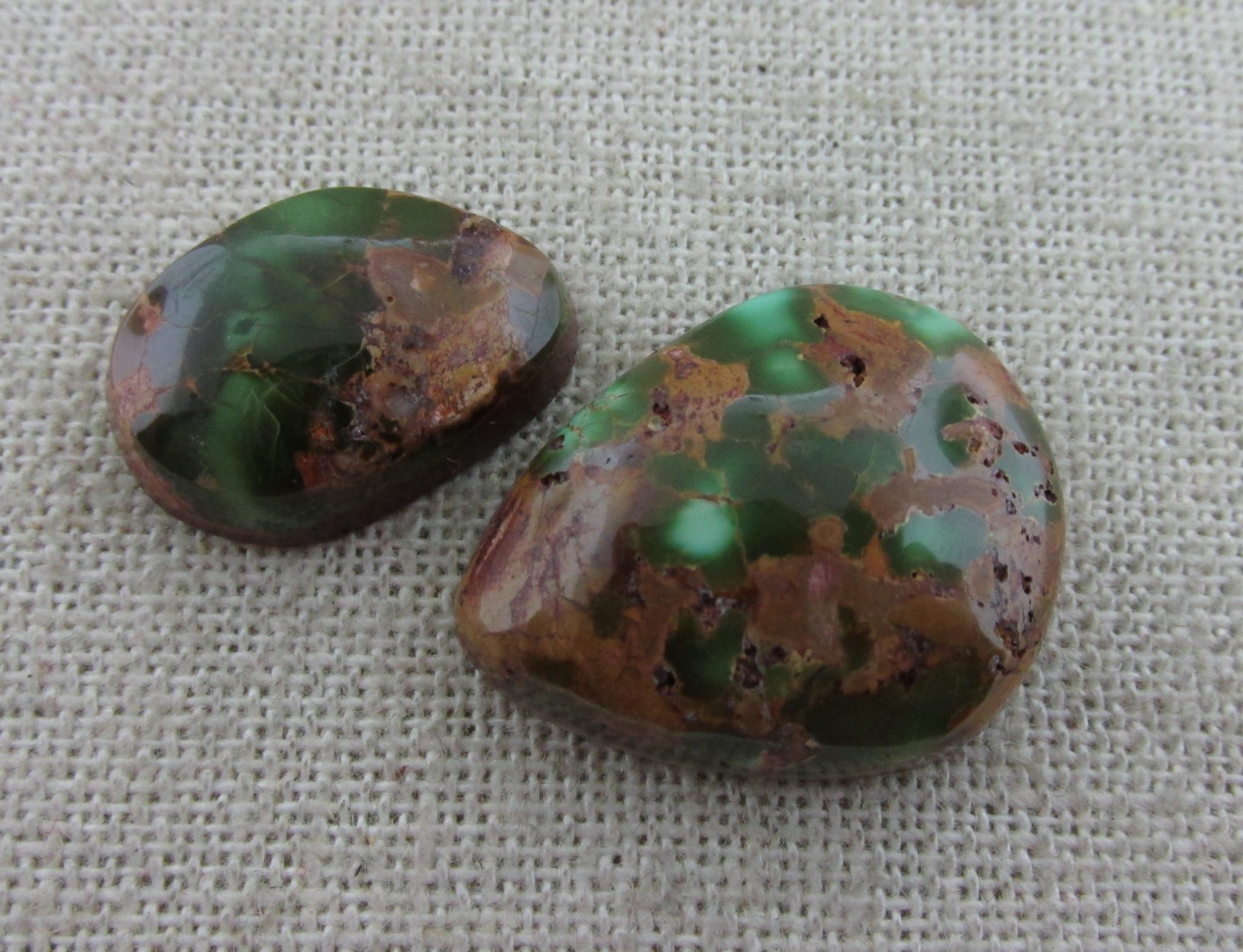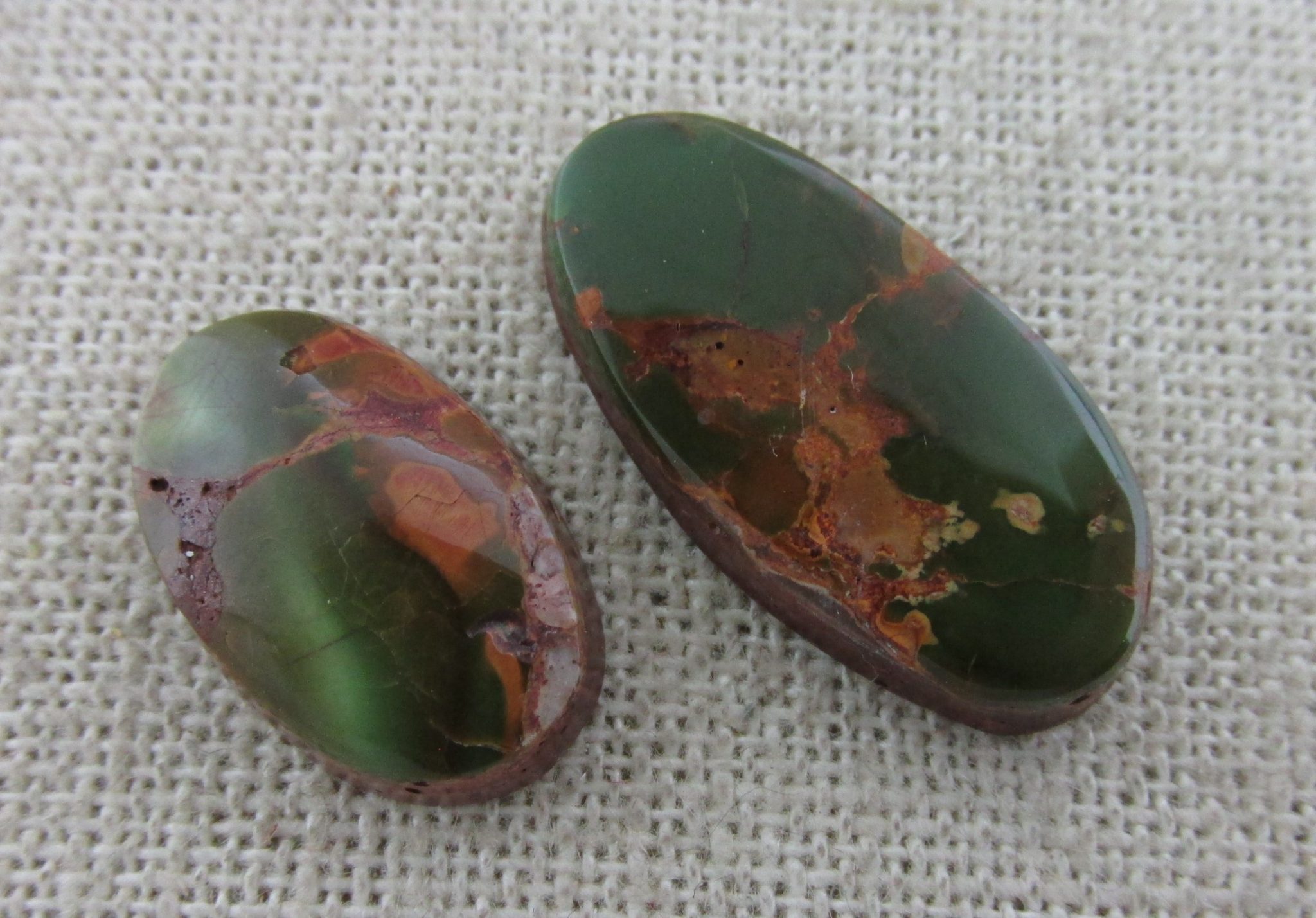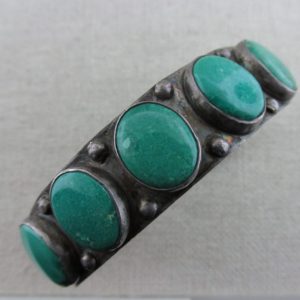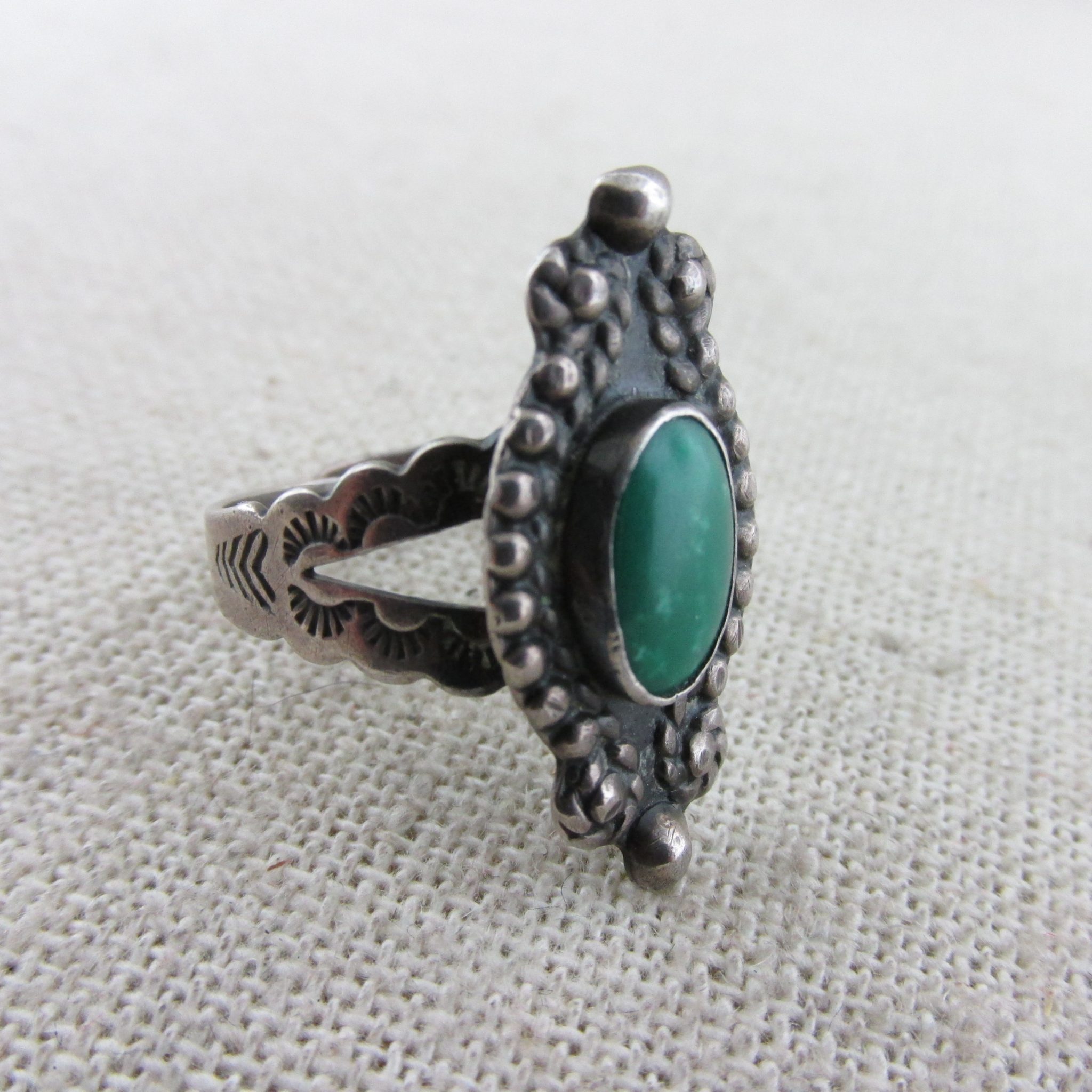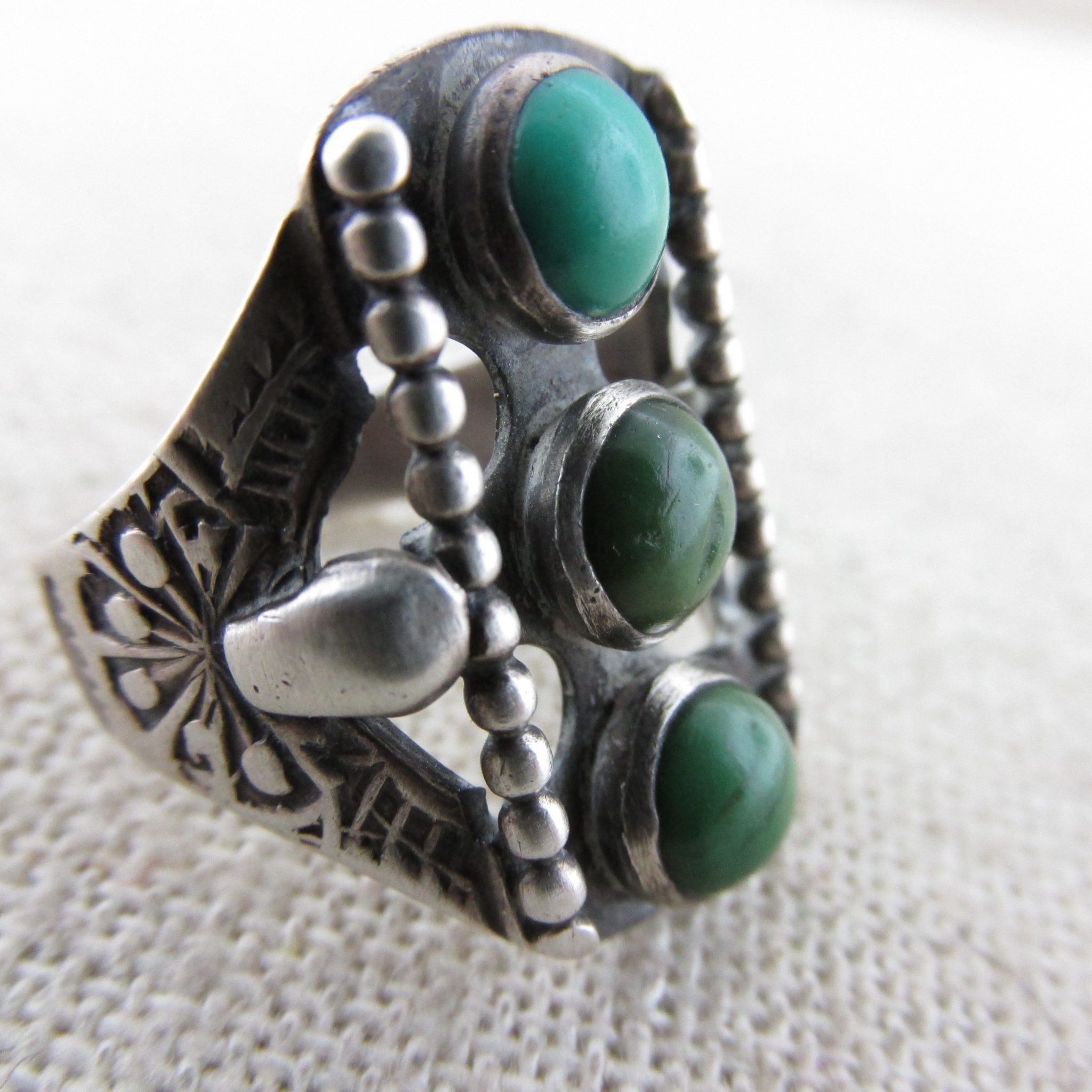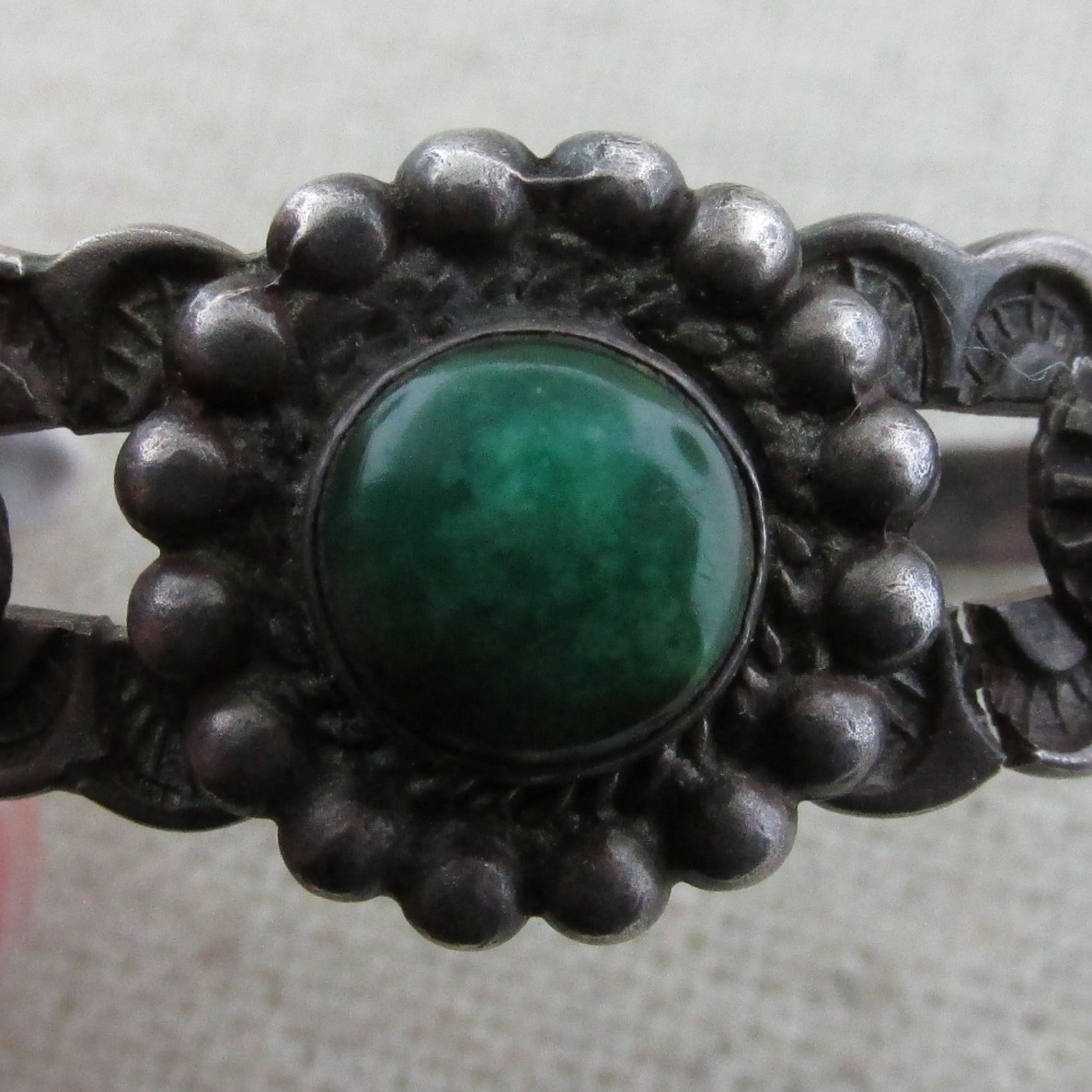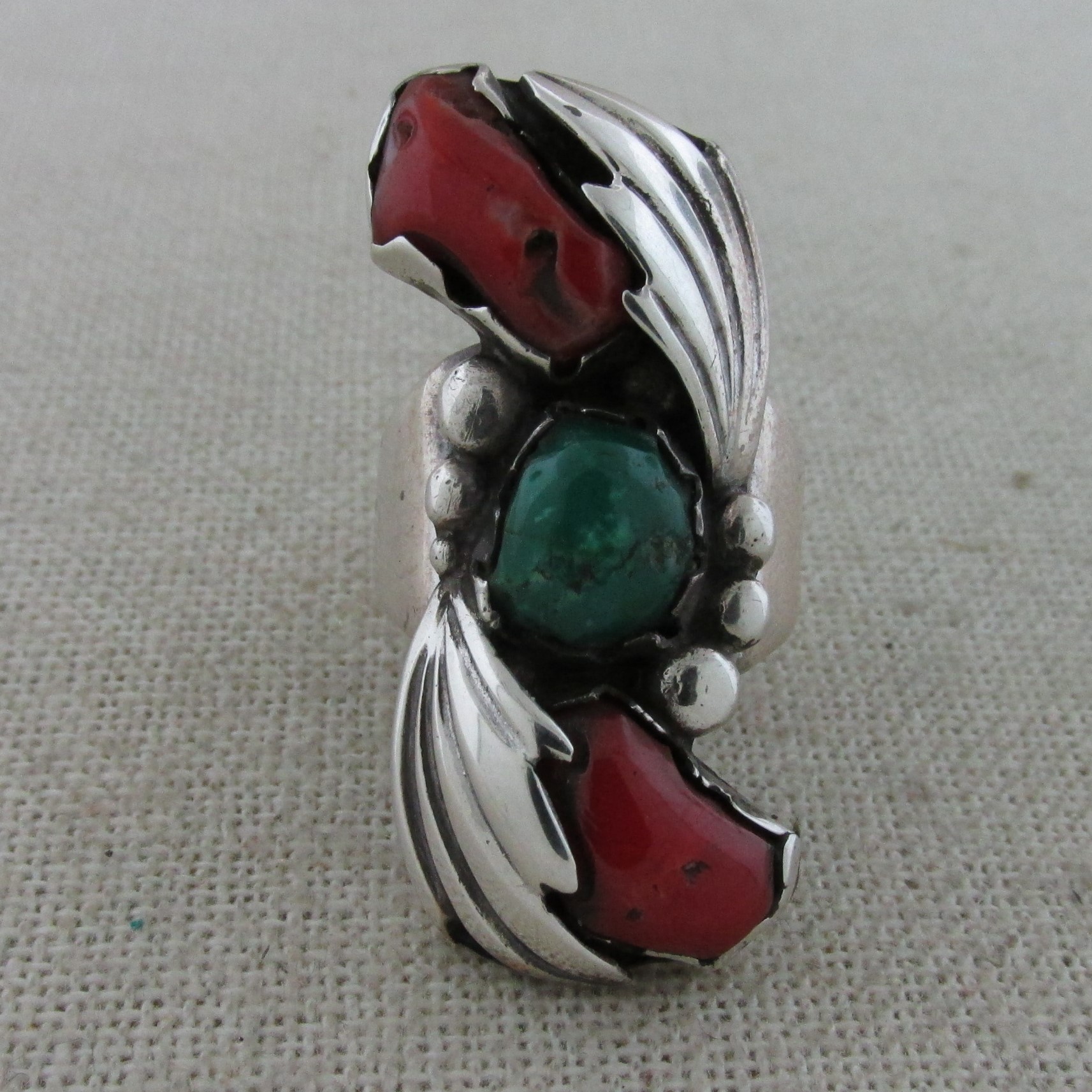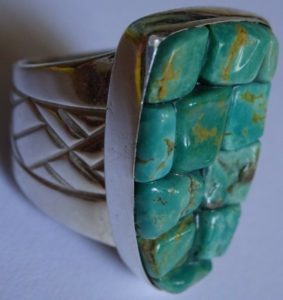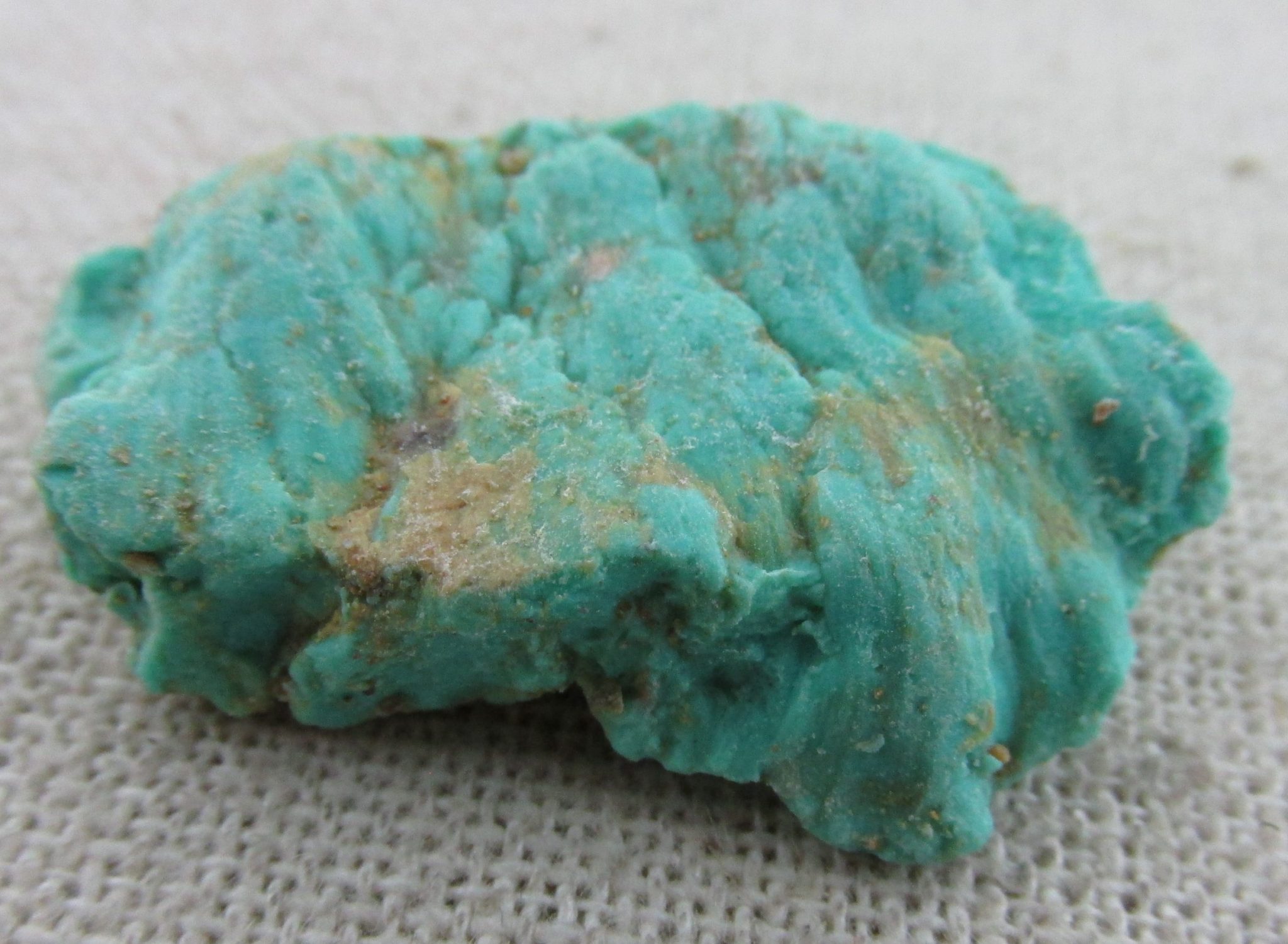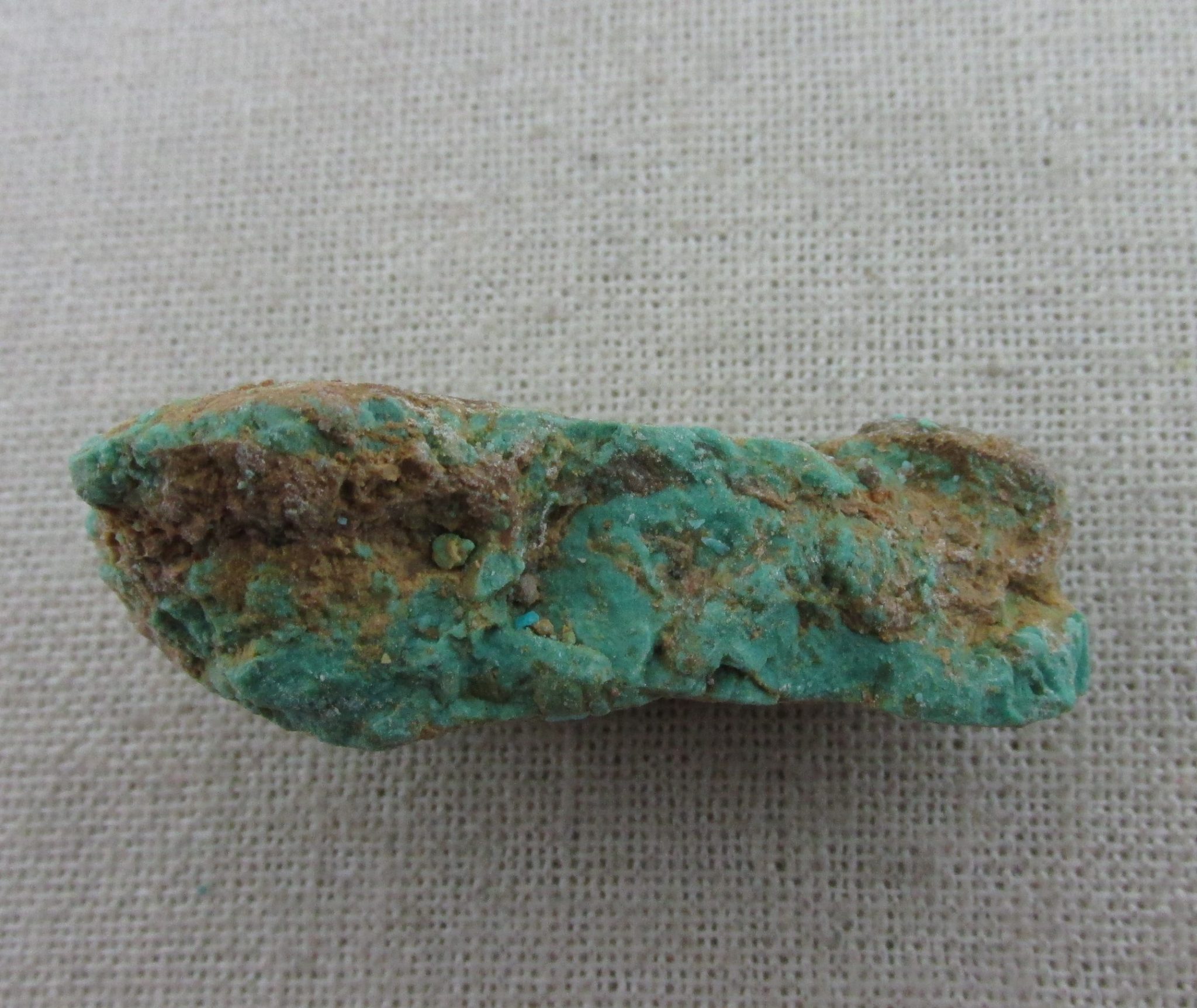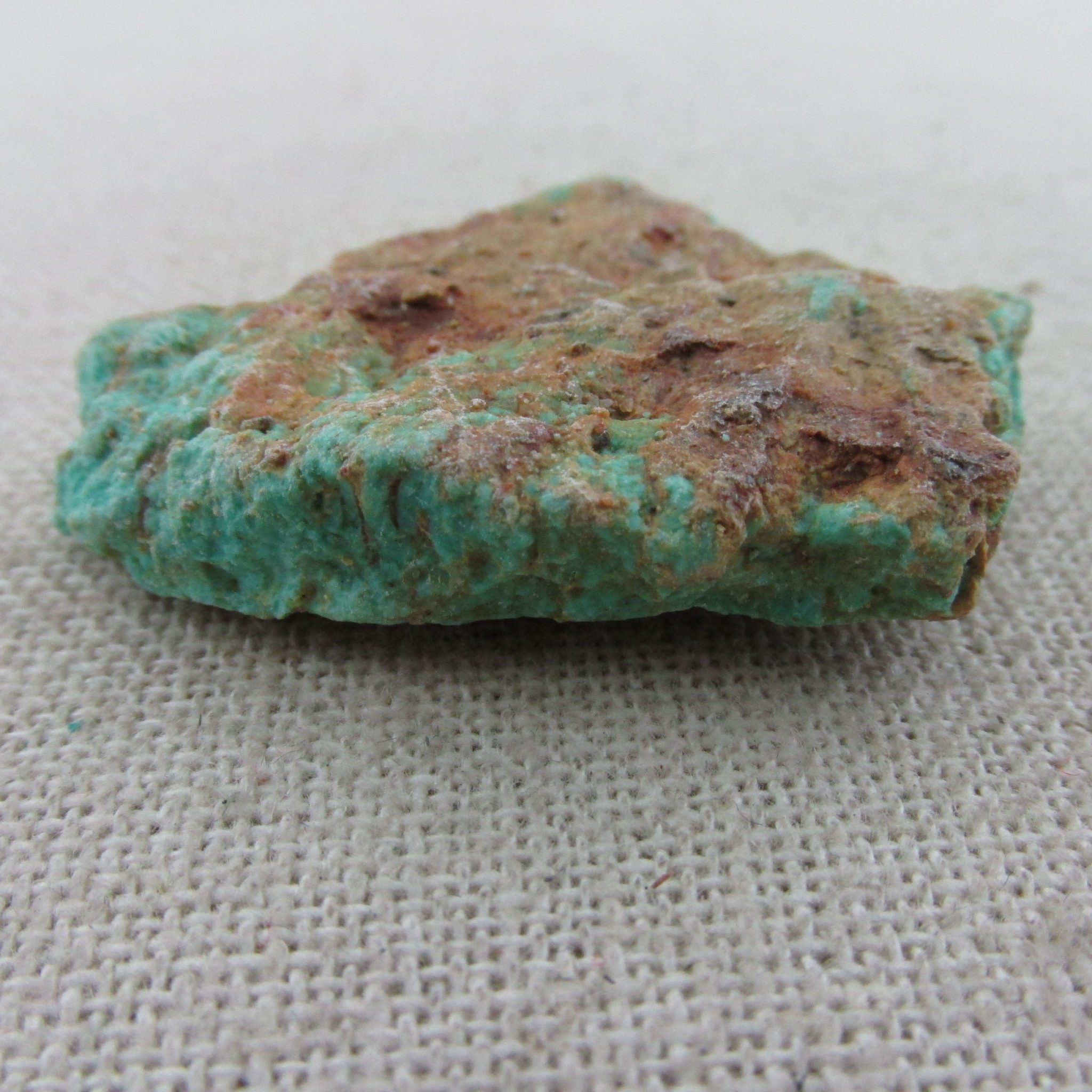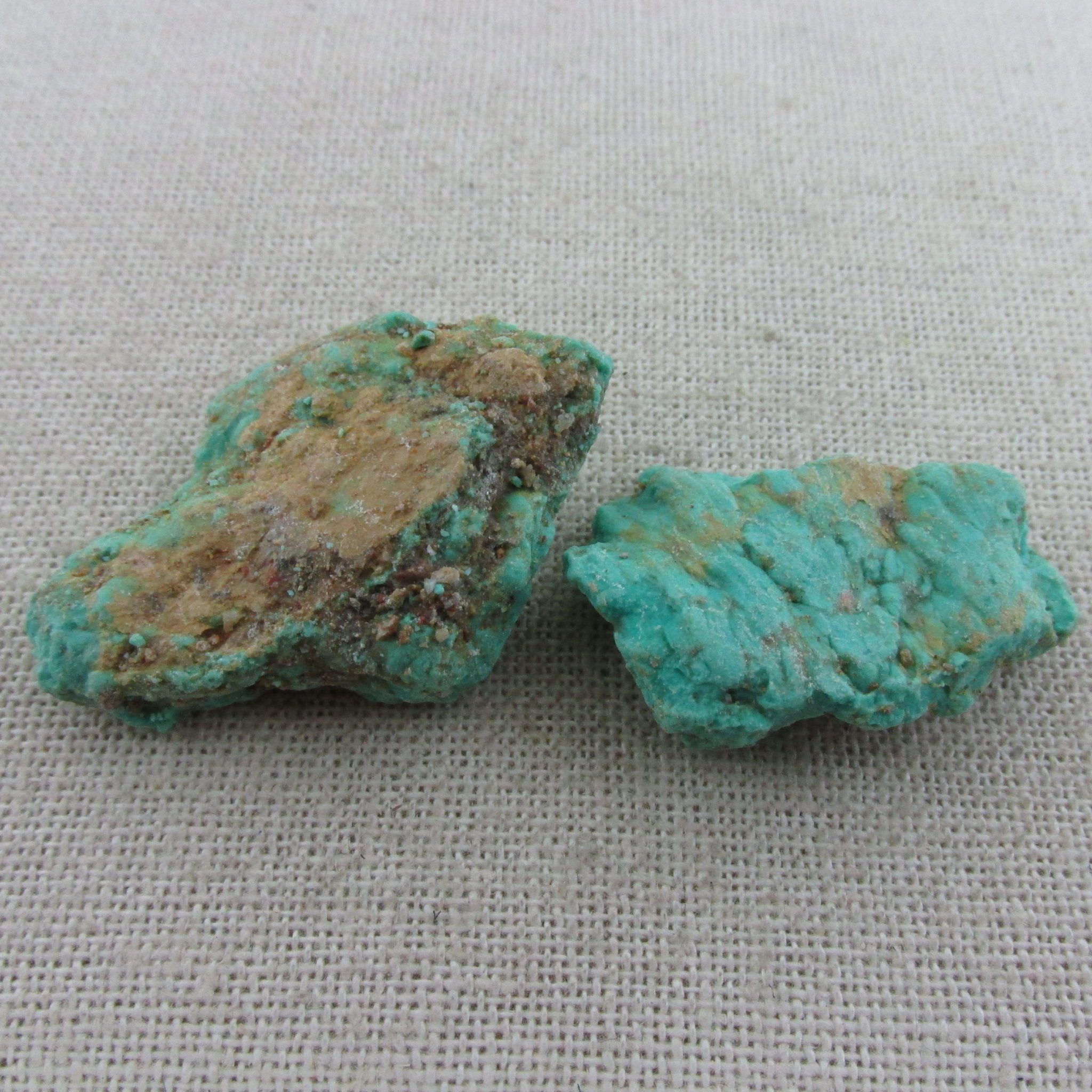First of all, this is an abbreviated look at some popular United States turquoise mines. In addition, we’ve try to include both turquoise in finished jewelry and examples of the same turquoise in rough form. Finally, hopefully this information will help you in identifying turquoise when you are out and about!
ARIZONA TURQUOISE
Bisbee Turquoise
Most interestingly, the Bisbee mine “the Lavender Pit”, near Bisbee, Arizona, is one of the more famous of the American turquoise mines. In like manner, Bisbee turquoise is one of the first to be introduced to the market. Most noteworthy, the Arizona turquoise mine is part of the Bisbee copper mine (The Copper Queen).
In addition, Bisbee turquoise is known for it’s “chocolate brown” matrix and is the only turquoise on earth that has this appearance. Notably, the only other turquoise that comes close to it’s appearance is Persian Turquoise. Surprisingly, Bisbee Turquoise also comes in a beautiful green color. Consequently, most jewelry being made with this stone today is being made through old “stashes” or collections. Most noteworthy, it is no longer available at the mine. In conclusion, Bisbee Turquoise Jewelry is some of the most desired jewelry on the market.
Ithaca Peak Turquoise
Secondly, the Ithaca Peak Turquoise mine is in northwestern Arizona, just above the Kingman mine. Ithaca Peak turquoise comes from the Cerbat Mountains in Mohave County. In addition, it is part of the Kingman mining operations and one of the two main turquoise deposits along with Turquoise Mountain.
Most notably, the Ithaca Peak Mine is famous for its beautiful blue turquoise with black and silver (pyrite) matrix. As a result, this material is one of the top turquoise mines in the United States. Consequently, it is fairly rare to obtain good Ithaca Peak, as current production is at Turquoise Mountain and the other Kingman Turquoise site. Likewise, Ithaca peak turquoise is typically a beautiful sky blue color but is specifically known for heavier pyrite inclusions.
Kingman Turquoise
Comparatively, the Kingman Turquoise mine, in northwestern Arizona, and is the largest operating turquoise mine in North America. Believe it or not, turquoise from this mine has been identified in over 30 different colors! Consequently, the appearance of the different varieties of turquoise can mimic many other known turquoise deposits around the world.
In addition, the mine became famous for its rounded, bright blue nuggets with black matrix. Remarkably, old natural Kingman Arizona Turquoise is rare. Likewise, the Colbaugh’s own this mine, the Ithaca Peak Turquoise mine, and the Turquoise Mountain mine. Consequently, the company name is Colbough Processing.
Equally important, the newly discovered veins of natural Kingman Turquoise has intense black spiderweb, and is very desirable and valuable! As a result, most of the turquoise jewelry you see today features Kingman turquoise from Arizona, USA.
Morenci Turquoise
In addition, this turquoise is mined in southeastern Arizona, near Clifton/Morenci. Remarkably, it has produced some of the finest Turquoise that has ever come out of the ground! Likewise, it is high to light blue in color. Some rare high grade is naturally a super dark blue. Morenci has an unusual matrix of irregular black pyrite that, when polished, often looks like silver. It is well known because it was one of the first American turquoises to come on the market. It is also very well known for its high grade.
This mine also produces turquoise with a “Birdseye” or “Water Web” matrix pattern. Some of the Turquoise has rare quarts matrix. As a result, it is very difficult to obtain now because the mine is depleted. Hence, Morenci is a very valuable and collectible variety of turquoise.
Sleeping Beauty Turquoise
The Sleeping Beauty mine was located near Globe, Arizona. Its turquoise is noted for its solid, light blue color with no matrix. The mine has been closed for over 10 years. Sleeping Beauty turquoise is the favorite of the Zuni Pueblo silversmiths for use in petite point, needlepoint, and inlay jewelry. It is one of the most popular Turquoise varieties world wide. It has a close resemblance to the old high grade blue Persian Turquoise.
In some countries, solid blue Sleeping Beauty Turquoise is of the highest value. In this country, black media is added at the mine, which attaches to the natural white matrix. American’s like the blue and black contrast. Most of the robin’s egg blue turquoise you see today is Sleeping Beauty turquoise.
Turquoise Mountain
Turquoise Mountain and “Birdseye” Turquoise come from the same mine in northwestern Arizona near the Kingman mine. Today most of the Turquoise Mountain Turquoise on the market is stabilize turquoise. However, like most turquoise, when it is natural it is valuable when it is natural and not stabilized. It is light to high blue, with both webbed and non-webbed matrix. “Birdseye” describes stones from this mine that show areas of light blue circled with dark blue matrix, resembling the eye of a bird.
COLORADO TURQUOISE
Cripple Creek Colorado Turquoise
The Cripple Creek mine in Teller County, Colorado is the site for a number of small gold mining claims. Cripple Creek Turquoise is originally found primarily as a by-product of gold mining, as are other Colorado Turquoise mining claims. In contrast, most turquoise is a by-product of copper mining. There are several Turquoise claims in the Cripple Creek district such as the Elkhorn Claim, the Florence Turquoise Mine, the O’Haver Claim, the Roanoke Shaft, and the Hidden Treasure Turquoise Mine.
One of the groups still mining the Turquoise claims are the Bad Boys of Cripple Creek. The areas that the Bad Boys are mining yield some greenish Turquoise, and some light to dark blue Turquoise with brown matrix. As a result, it has become a little more common to see Turquoise Jewelry with Cripple Creek Turquoise these days due to increased mining efforts. On a rare occasion, this Turquoise has natural Gold Ore present.
Manassa Turquoise
Sometimes called “King’s Manassa” this turquoise is from Manassa, in South central Colorado. Manassa Turquoise has golden brown or brown matrix and it’s blue-green to green color. There is no current mining activity at this turquoise mine.
Consequently, this mine originates from I.P. King. and now belongs to his grandson.
NEVADA TURQUOISE
Blue Diamond Turquoise
The Blue Diamond Turquoise Mine is located in central Nevada. It was first mined in the late 1950’s and production ends in 1980. The turquoise came out in large plate form, rather than in nuggets. Black chert is a host rock that attaches itself to this turquoise. Blue Diamond Turquoise comes in blues and greens. The mine is now under thousands of tons of rock. The mine operates extensively in the 1970’s.
There are three different locations all called the same name, and each produced a great variety of turquoise, from intense blues to deep green combinations with a hard, irregularly distributed matrix. While there are other mines in Nevada of the same name, the Battle Mountain Blue Gem mine and the Tonapah Blue Gem Mine, which begin production in 1934 and is no longer producing, yields the most valuable Blue Gem turquoise. As a result, this was due to its rich color and its hardness. Most noteworthy, many vintage pieces, such as the rainbow man, have this variety of turquoise.
Broken Arrow (Variscite)
Natural Nevada Broken Arrow Variscite. It varies from a stunning light green to an amazing deep green. Most importantly, the variety of variscite known as Broken Arrow comes from the only documented mine which produces both Turquoise and Variscite out of the same site. Consequently, the turquoise is “Big Nugget” and this mine is just North of Tonopah, Nevada. Variscite is a hydrated aluminium phosphate mineral (AlPO4·2H2O). It is sometimes confused with turquoise; however, variscite is usually greener in color. The green color results from the presence of small amounts of chromium.
Most interestingly, at times, materials which may be turquoise or may be variscite have been marketed as “variquoise”. Variscite from Nevada typically contains black spiderwebbing in the matrix and is often confused with green turquoise. Most importantly, Nevada variscite recovered in recent decades has come from mines located in Lander County.
Candelaria Turquoise
Consequently, the Candelaria mine(s) are claims located in the large Candelaria Open Pit Copper, Silver, and Gold Mine. The finest turquoise is now located in a part of the copper mine, so it is unattainable. The turquoise is a high quality stone of high blue color with an intermittent black or brown matrix. The high-grade Candelaria is a translucent dark blue with a reddish brown spider web matrix. It is one of the most valuable varieties of turquoise available.
Carico Lake Turquoise
Carico Lake turquoise comes from the location of its mines on a dried up lake bed in a high, cool area of Lander County, Nevada. This famous old Turquoise mine produces mainly a light blue color Turquoise that sometimes has a light brown spiderweb matrix. The Carico Lake Turquoise mine also produce Turquoise with black matrix as well.
The Carico Lake Turquoise mine is most famous for its Lime Green Faustite. Its clear, iridescent, spring green color is due to its zinc content and is highly unique and collectible. In addition, Carico Lake turquoise comes in a dark blue-green color with a black or brown, spider web matrix. This mine produces rare psuedomorph clams that have interior turquoise.
Damele (Variscite)
Demele is usually a variscite, which people confuse with turquoise. Damele comes from the Benny Demele Mine in Central Nevada. The Damele mine is outside of Austin, Nevada. It produces very distinct turquoise and variscite. Most of the Damele Turquoise and Variscite features a spiderweb matrix, for which it is famous for. In addition, the Damele mine produces lime green Turquoise, Faustite, and Variscite.
The mine originally gained notoriety for it’s yellow to lime Turquoise with black and brown spiderweb matrix. Tony Cotner is the last productive owner of the mine, who unfortunately is now no longer with us. Tony’s regular practice is to cover his working areas with 20 tons of dirt, as to discourage thieves from stealing material from his claim when he wasn’t there to guard it. Finally, Damele comes in a variety of colors from yellow, greens and grays with webbing.
Royston Turquoise
Royston Turquoise comes from the Royston mining district located just North of Tonopah, Nevada. Most interesting, mining first commences in the early 1900s. Most importantly, Royston Turquoise originally consisted of four old Turquoise claims located within the Royston mining district. These mines include: Easter Blue, Bunker Hill, Royal Blue, and Oscar Wehrend.
Especially relevant, the Royal Blue mine is responsible for most of the turquoise from the area and is sometimes people refer to it as Royston Royal Blue Turquoise. The Royston mine produces turquoise ranging in color from dark green to deep sky blue. Colors often run together in the same stone with a webbed golden brown matrix. The mine currently produces some very high grade material, but limited in quantities. Periodically, the owners of the mine will allow visitors to pay to tour the mines and pick through the tailing piles. In conclusion, the mines belong to the Otteson family.
NEW MEXICO TURQUOISE
Cerrillos Turquoise
Most interesting, Cerrillos is the only turquoise that formed at the base of a volcano. In fact, the Cerrillos New Mexico Turquoise mines produce seventy-five colors, from tan to khaki-green to rich, blue-green to bright and light colors. In addition to producing a distinctive stone, the Cerrillos mine is the oldest mine of any kind in North America. Ten miles south of Santa Fe, it is the site of the largest prehistoric mining activity on the continent because the huge turquoise deposit is viewable at the surface.
Most noteworthy, Pueblo miners used only stone axes, mauls, antler picks and chisels to remove 100,000 tons of solid rock to create a pit mine 200 feet deep. Especially relevant, the Tiffany Company in New York and its associates bought up the mine area and extracted $2,000,000 worth of turquoise between 1892 and 1899.
Hachita Turquoise
In conclusion, the Hachita turquoise mining activity dates from pre-historic to 1905. Consequently, it is located in Southwestern New Mexico. In addition, Hachita is one of the harder New Mexico Turquoise Mines to get turquoise from.
Tyrone Turquoise
Finally, turquoise from the Tyrone mine relates to the copper mine operations southwest of Silver City, New Mexico. In addition, the current owner of this mine is Phelps Dodge. However, turquoise is not available from that mining operation since the early 1980’s when Phelps Dodge changes it’s method of copper ore processing to crushing and acid wash. As a result, this method destroys any turquoise in the copper ore.
Most noteworthy, the Tyrone turquoise in new turquoise jewelry is from private stashes. It is medium brilliant blue in its high grade form and has a brown host rock as pictured. In addition, Tyrone turquoise is part of the mineral band that starts east of Silver City and curves around through Arizona and the Morenci turquoise mine area into Mexico.
Real Turquoise 1990 – 2025 © Schannep Ventures L.L.C.ALL RIGHTS RESERVED
